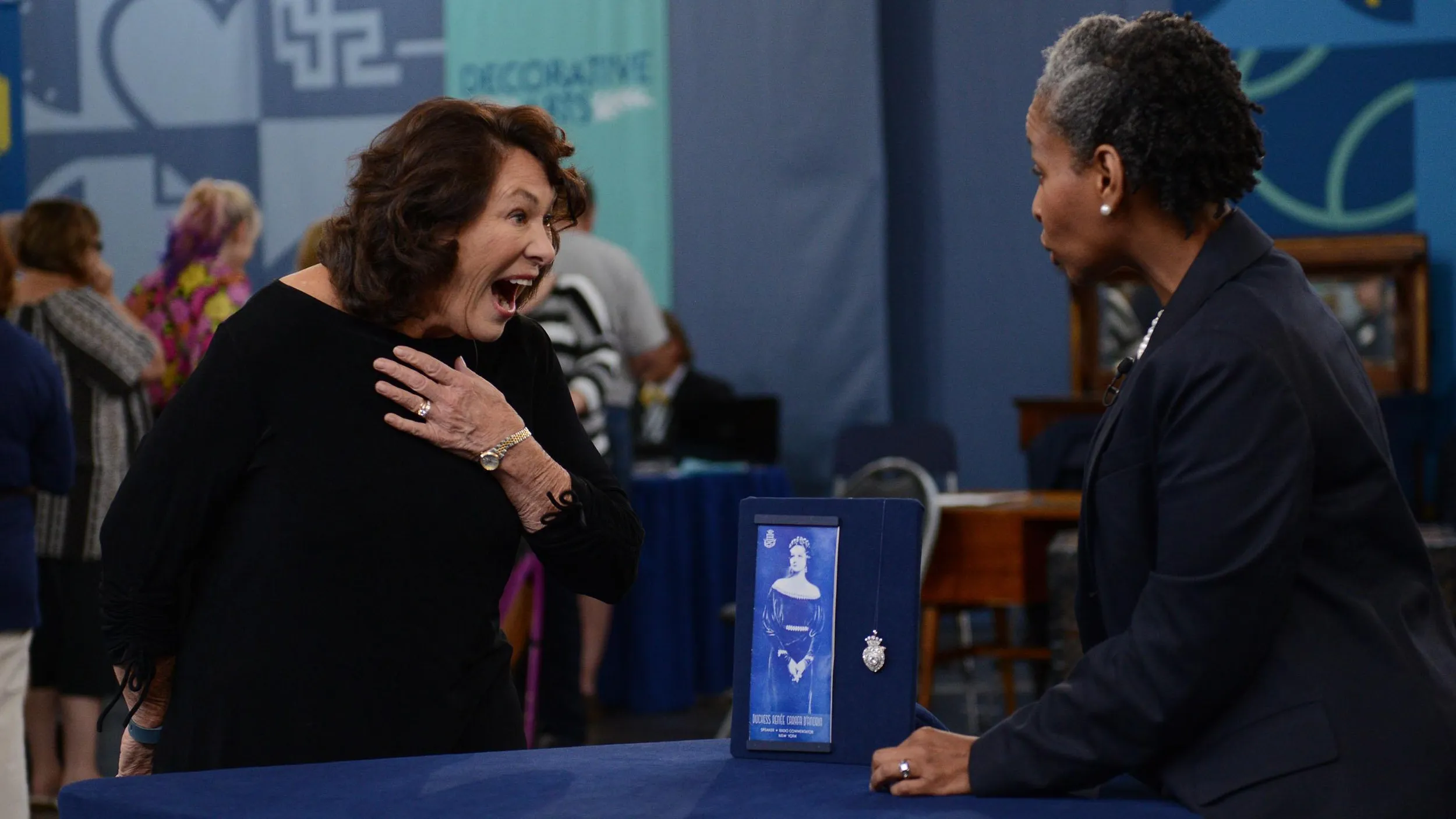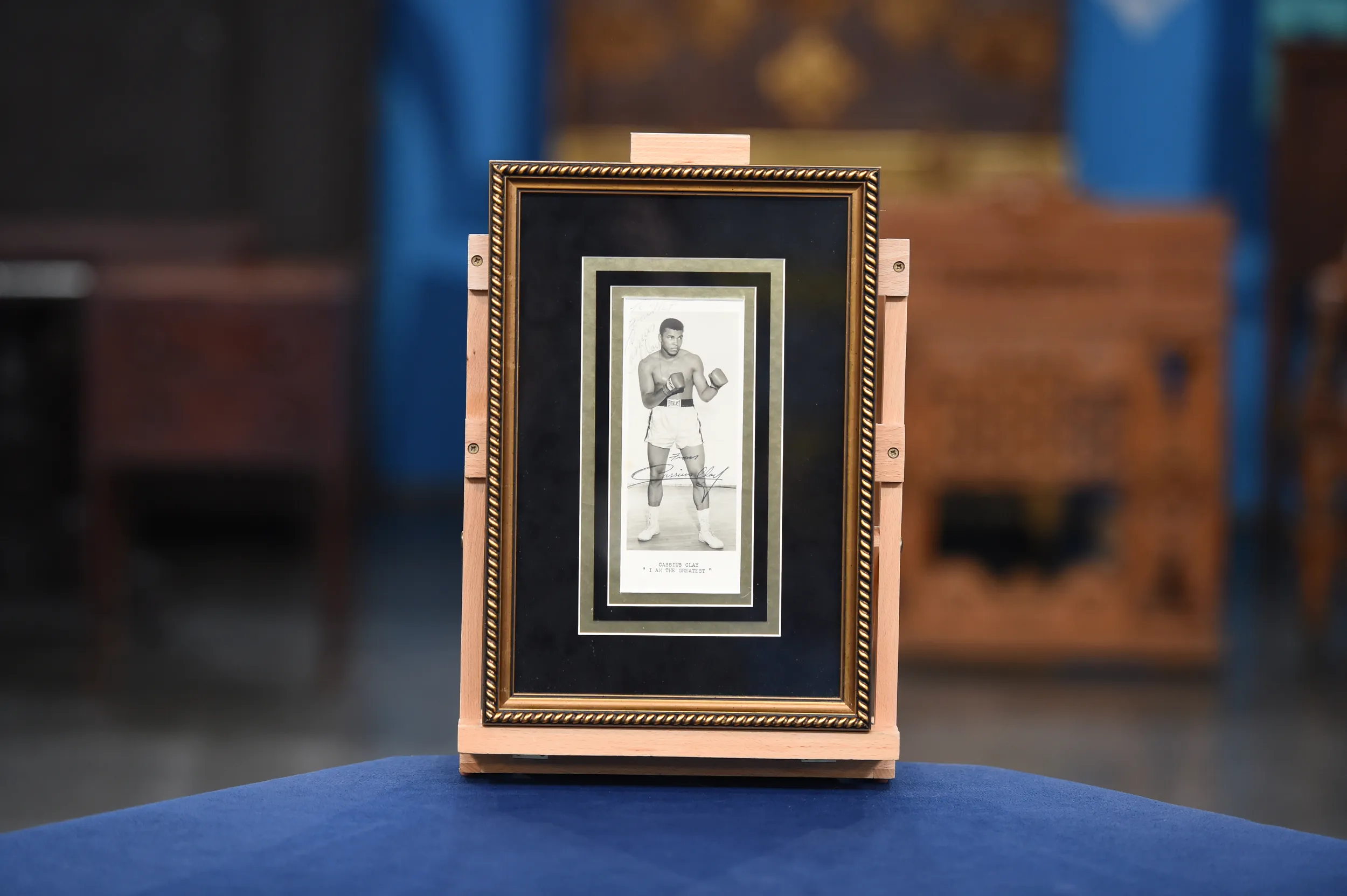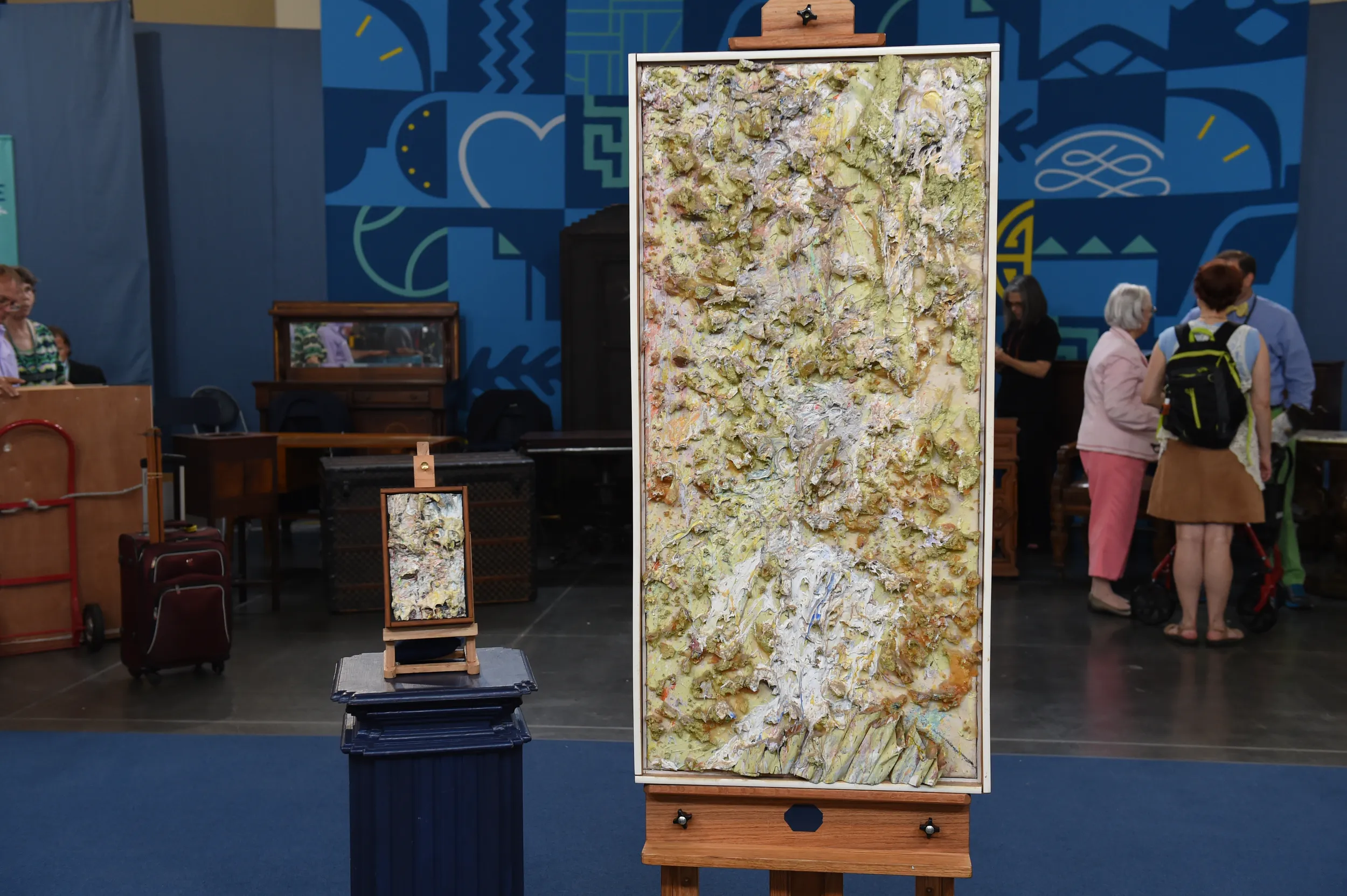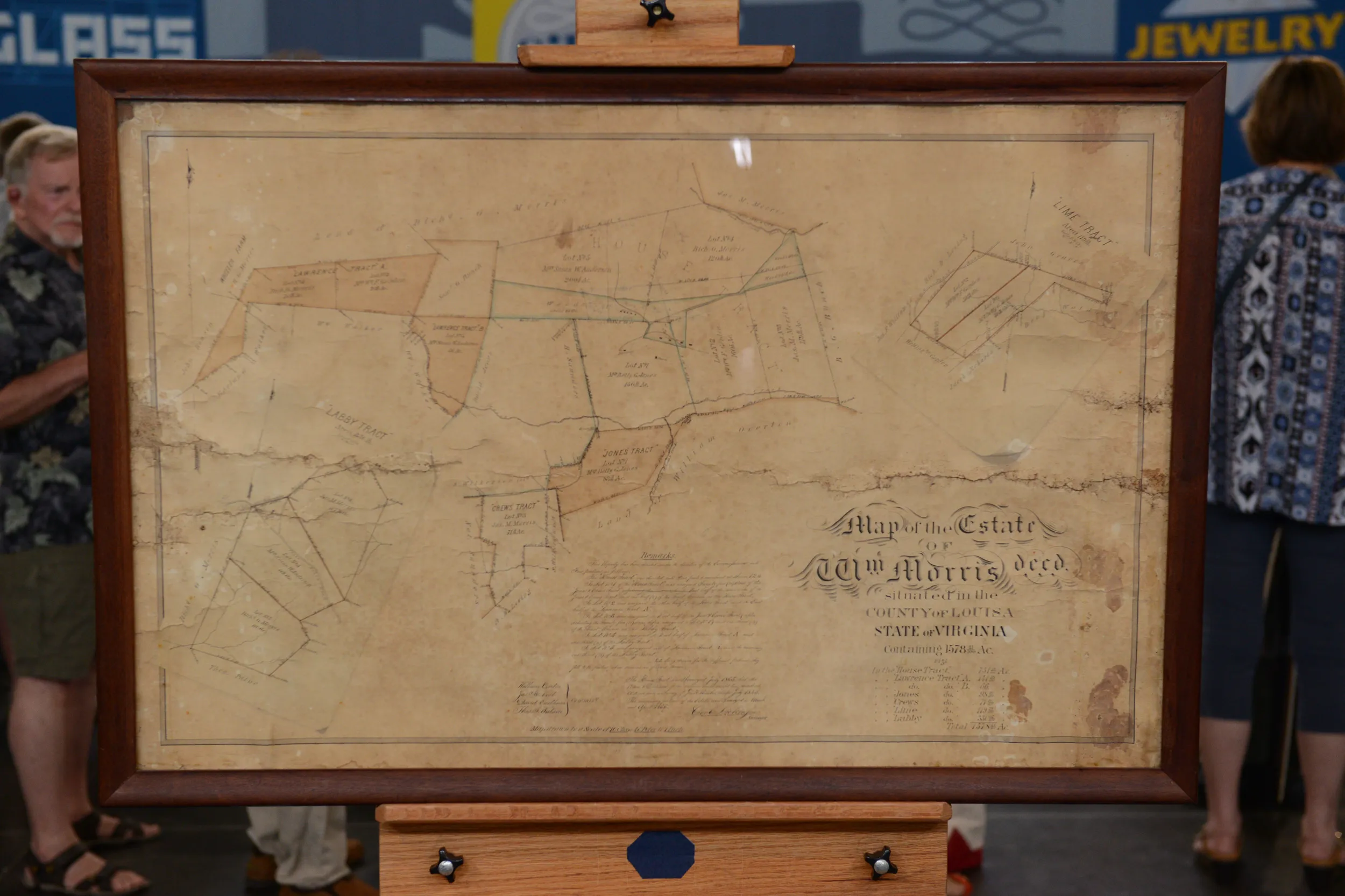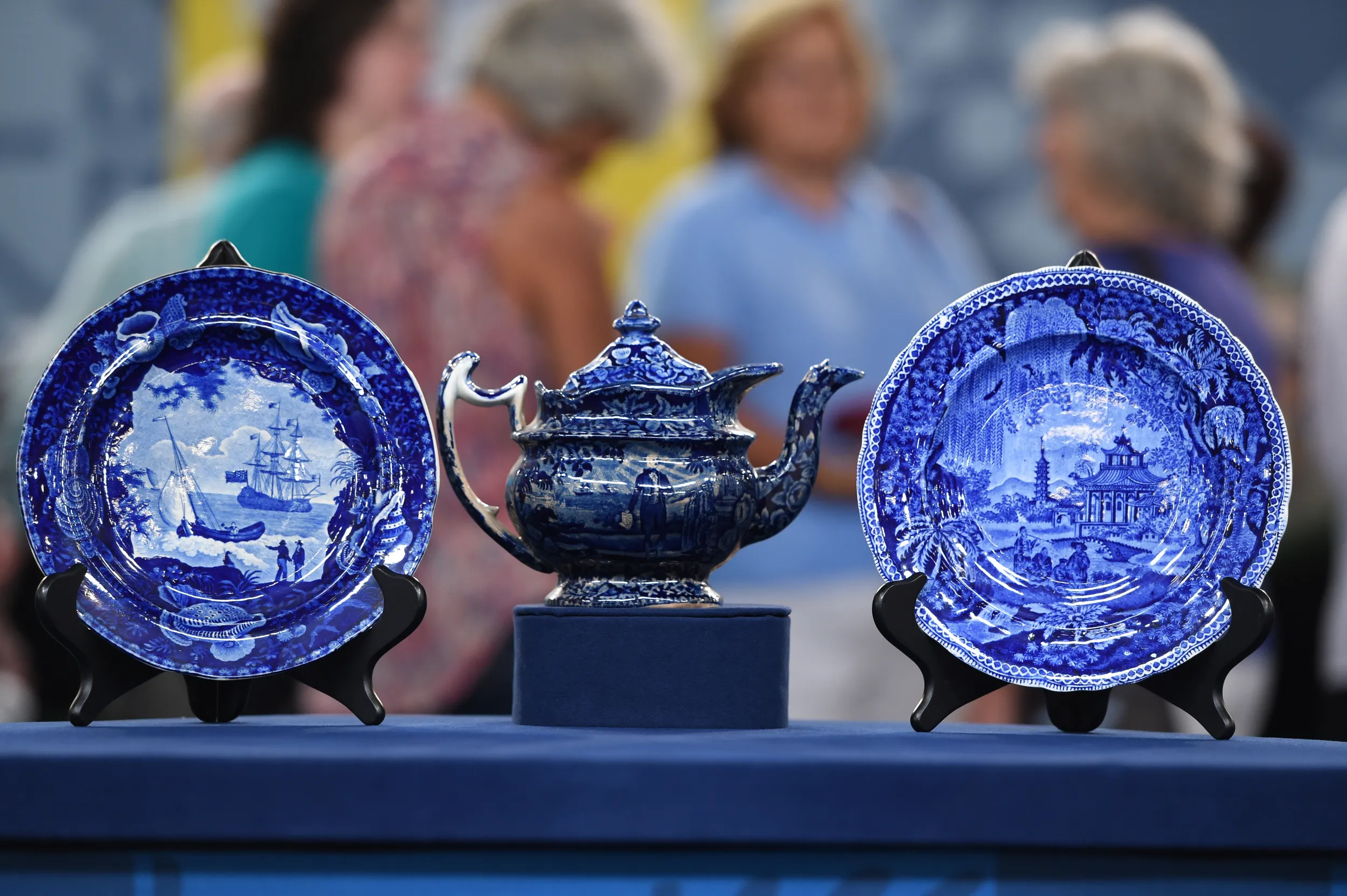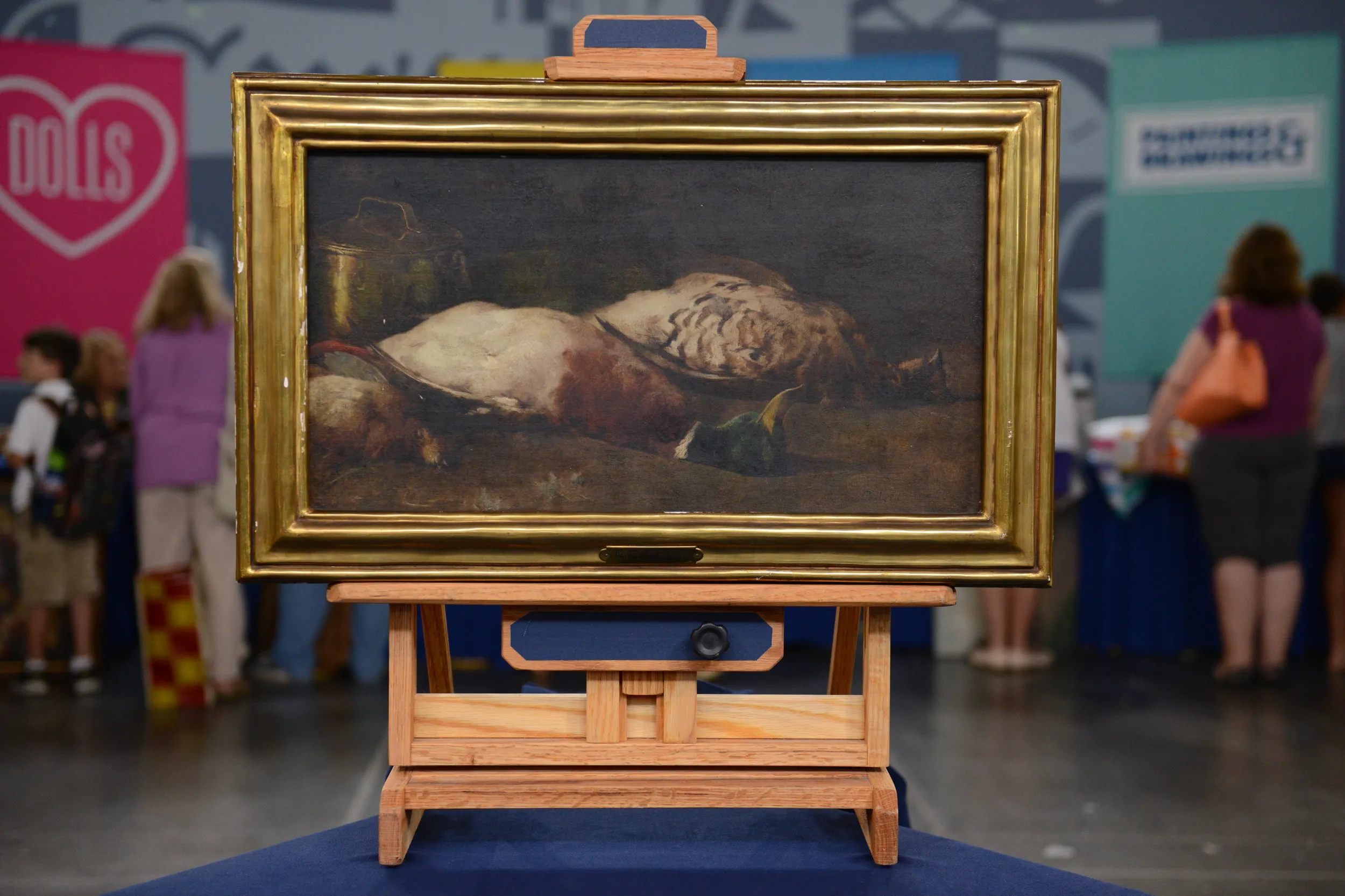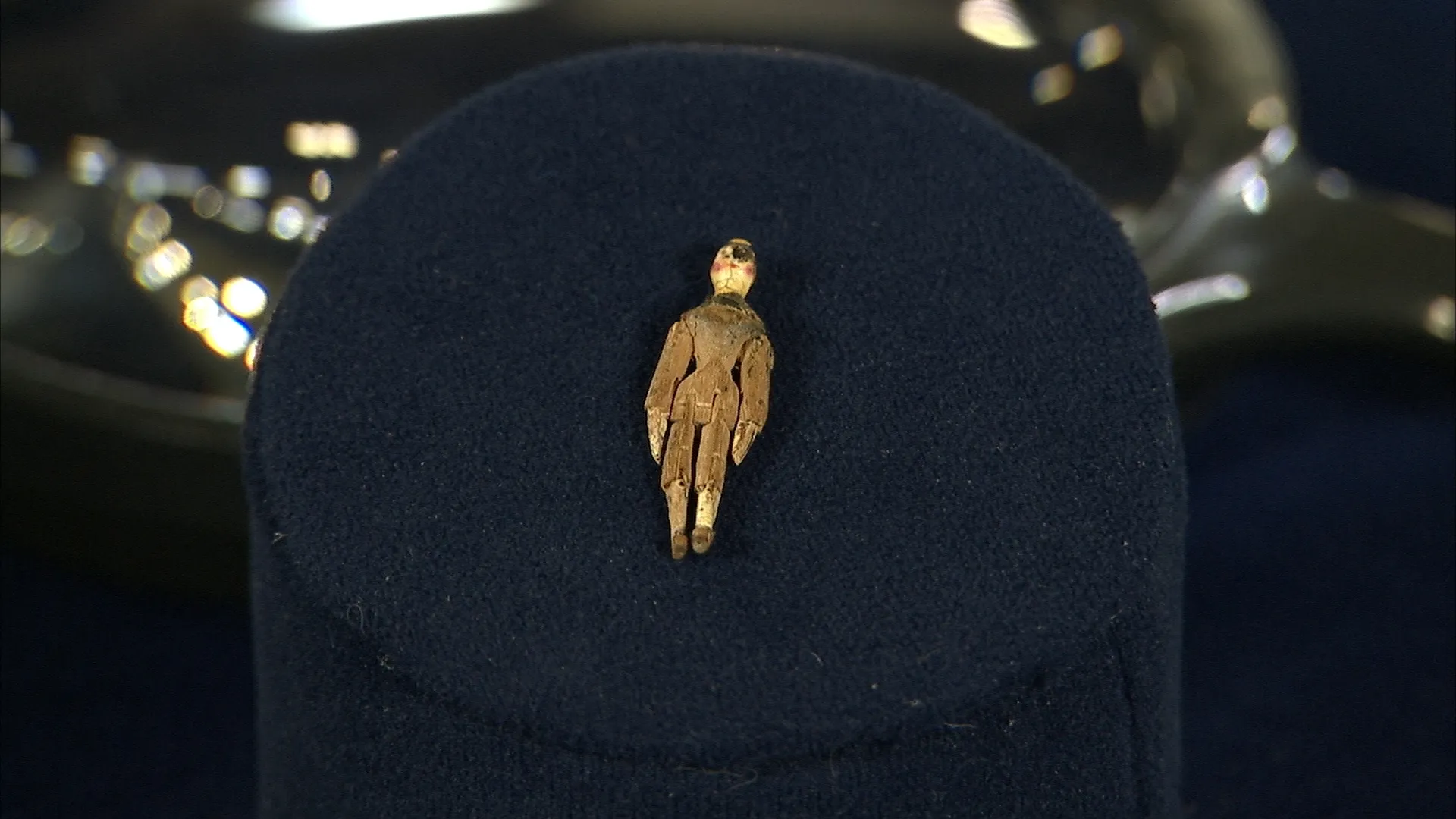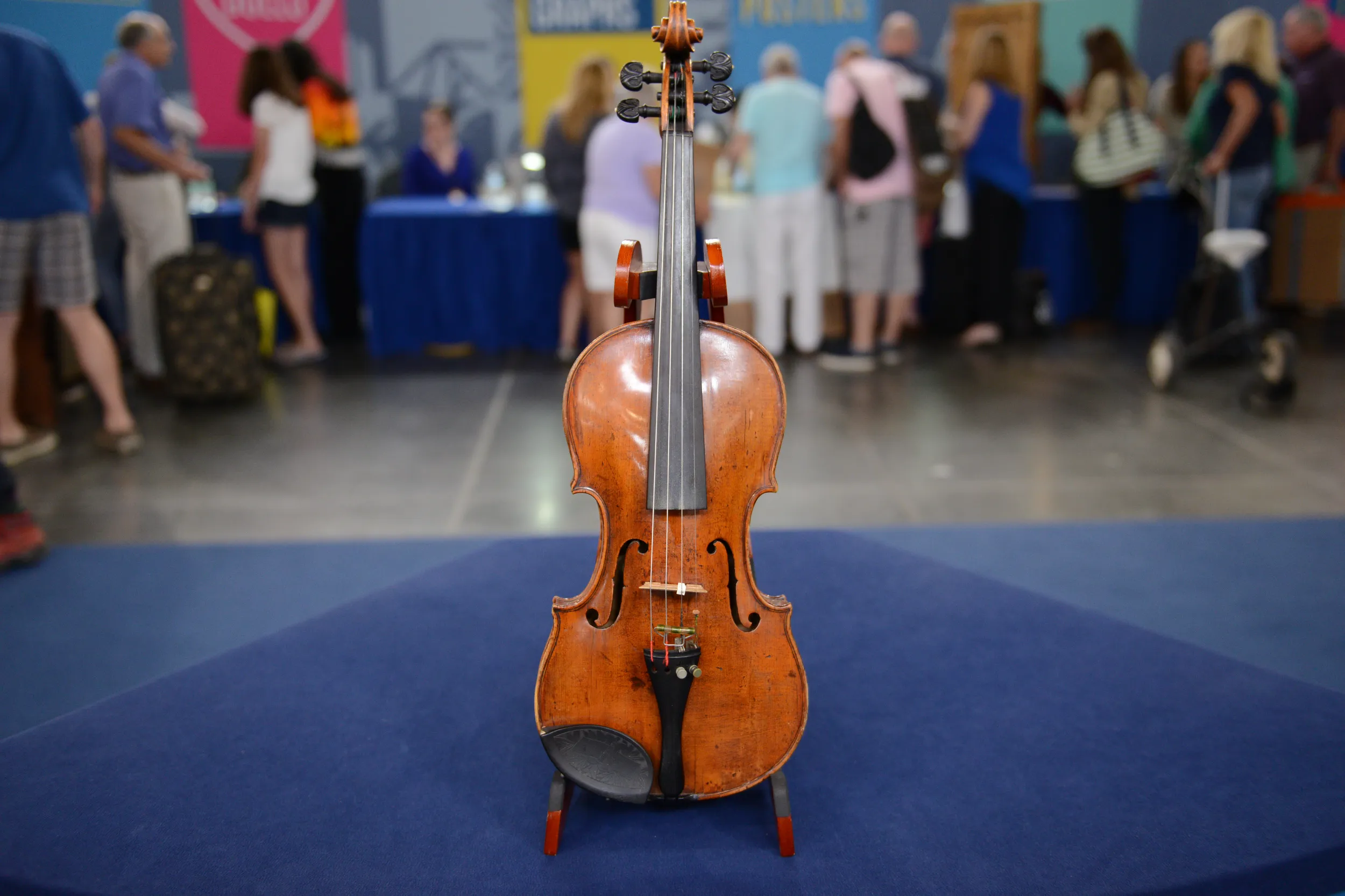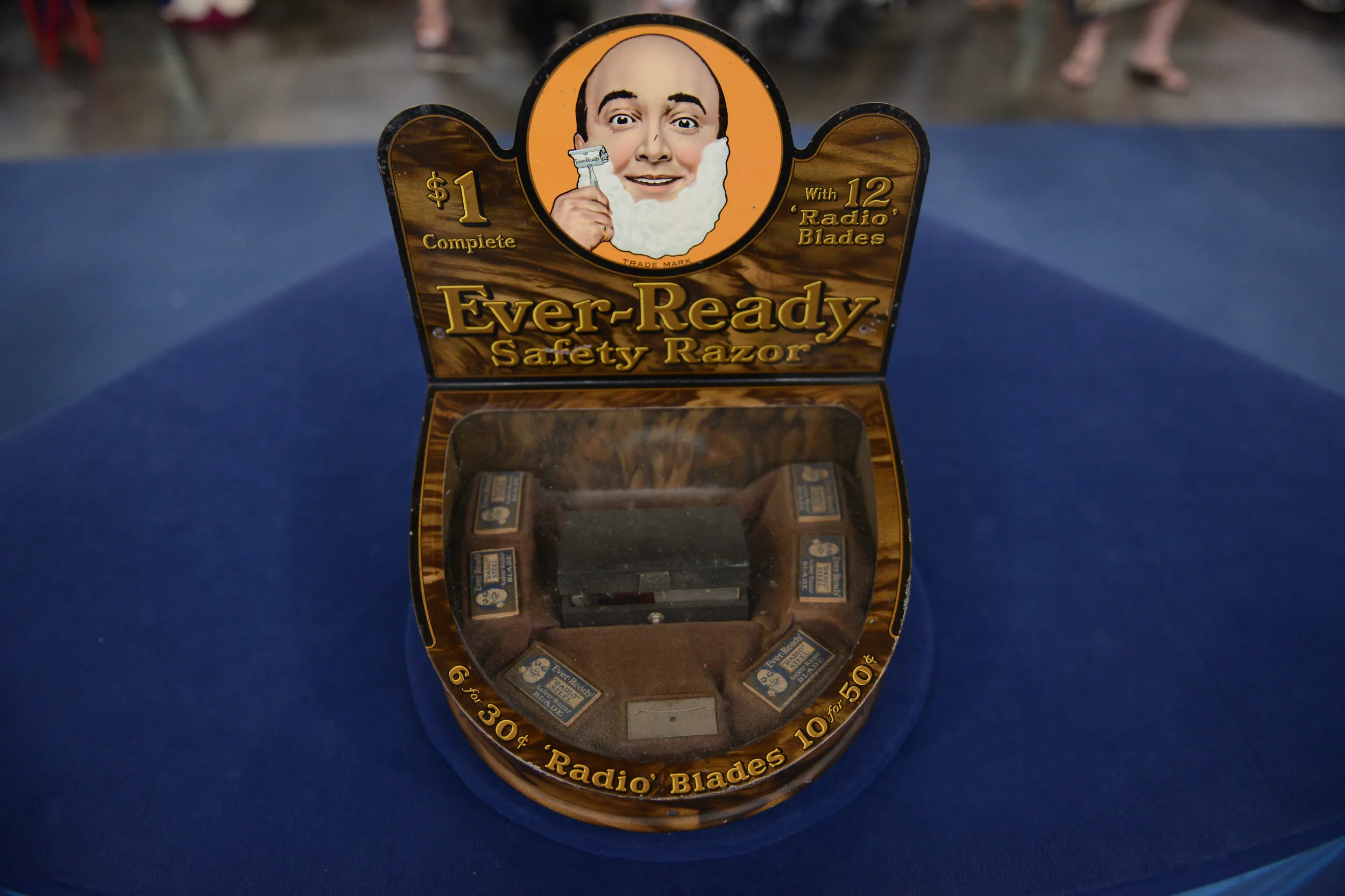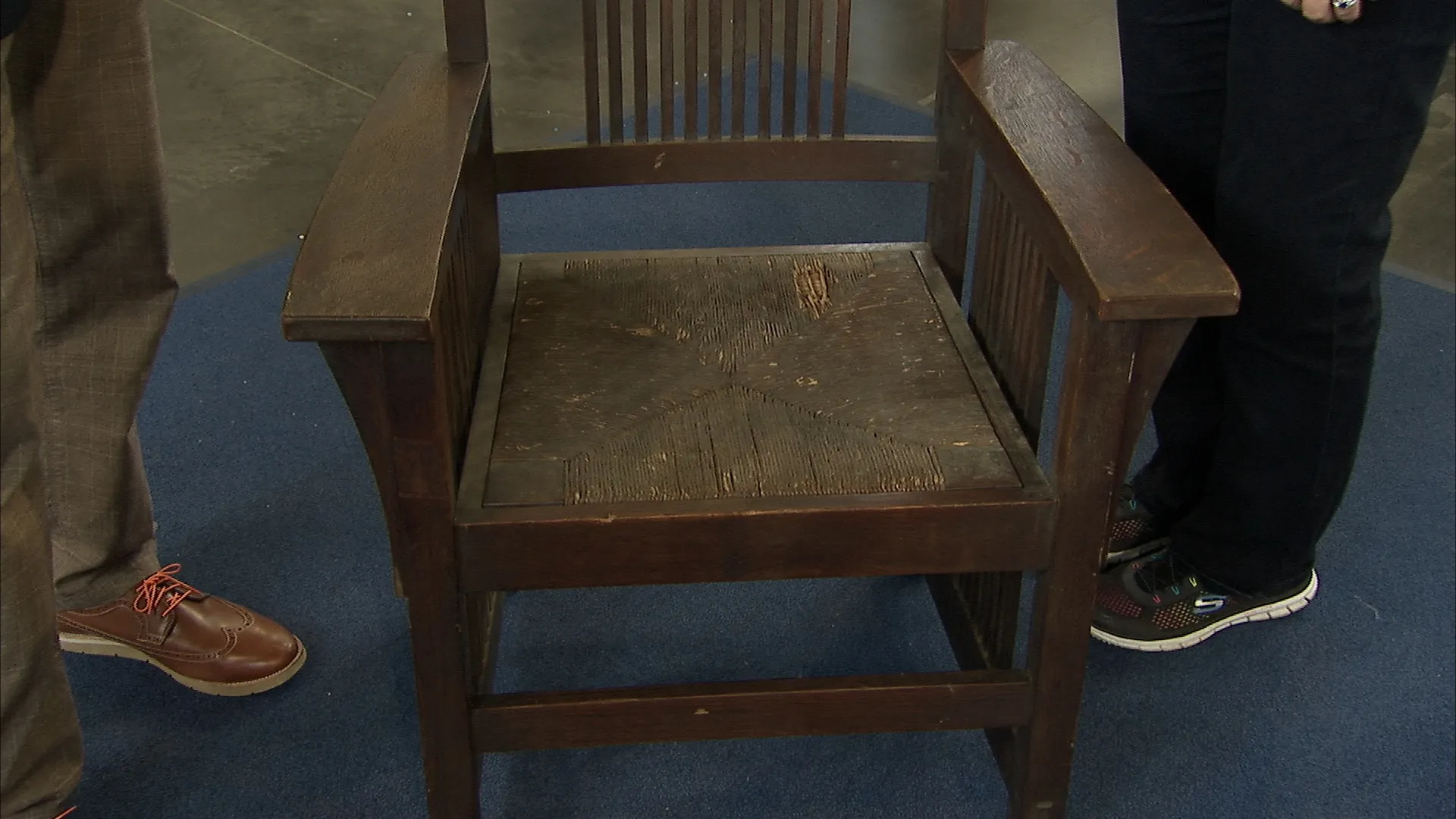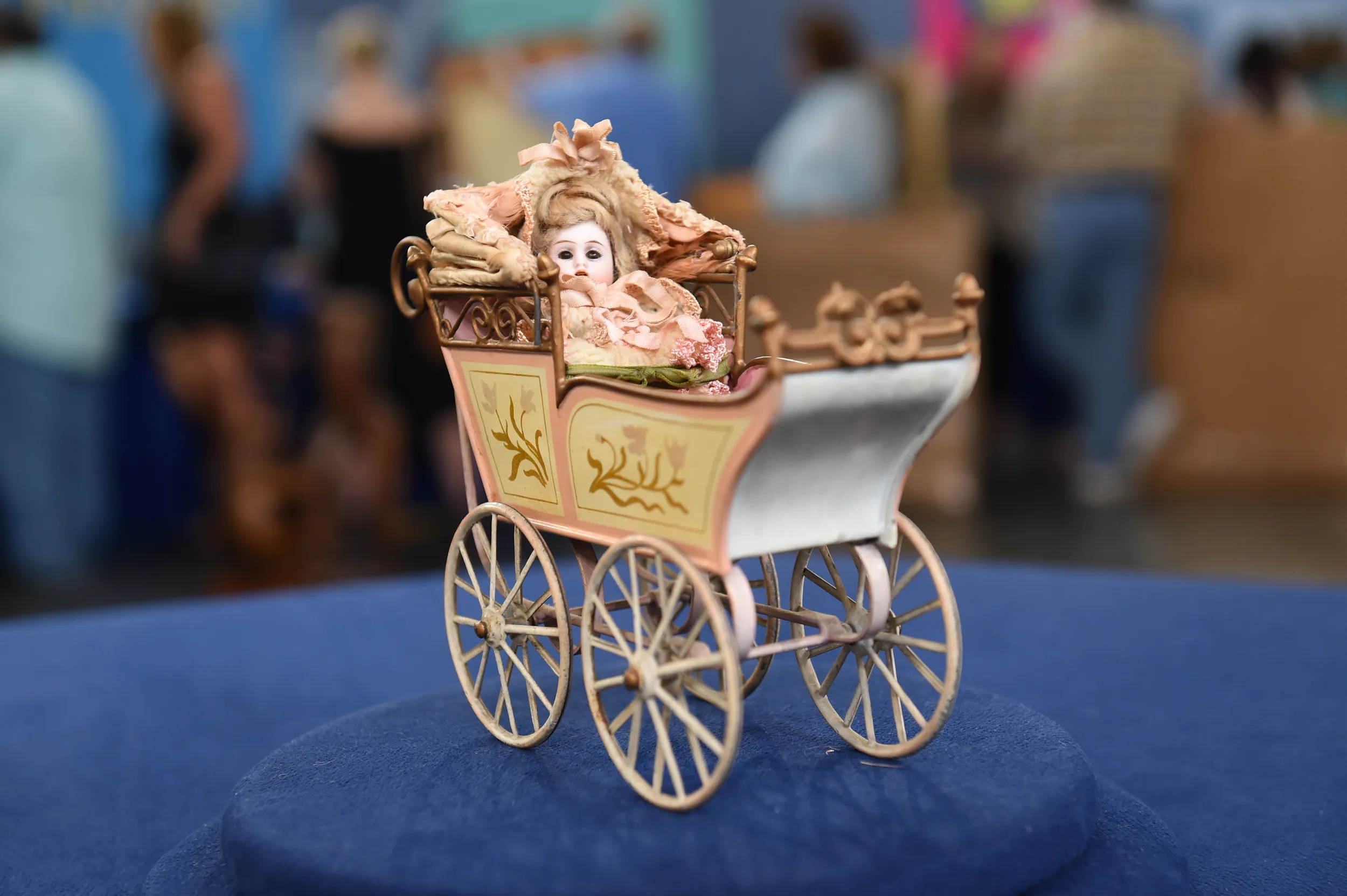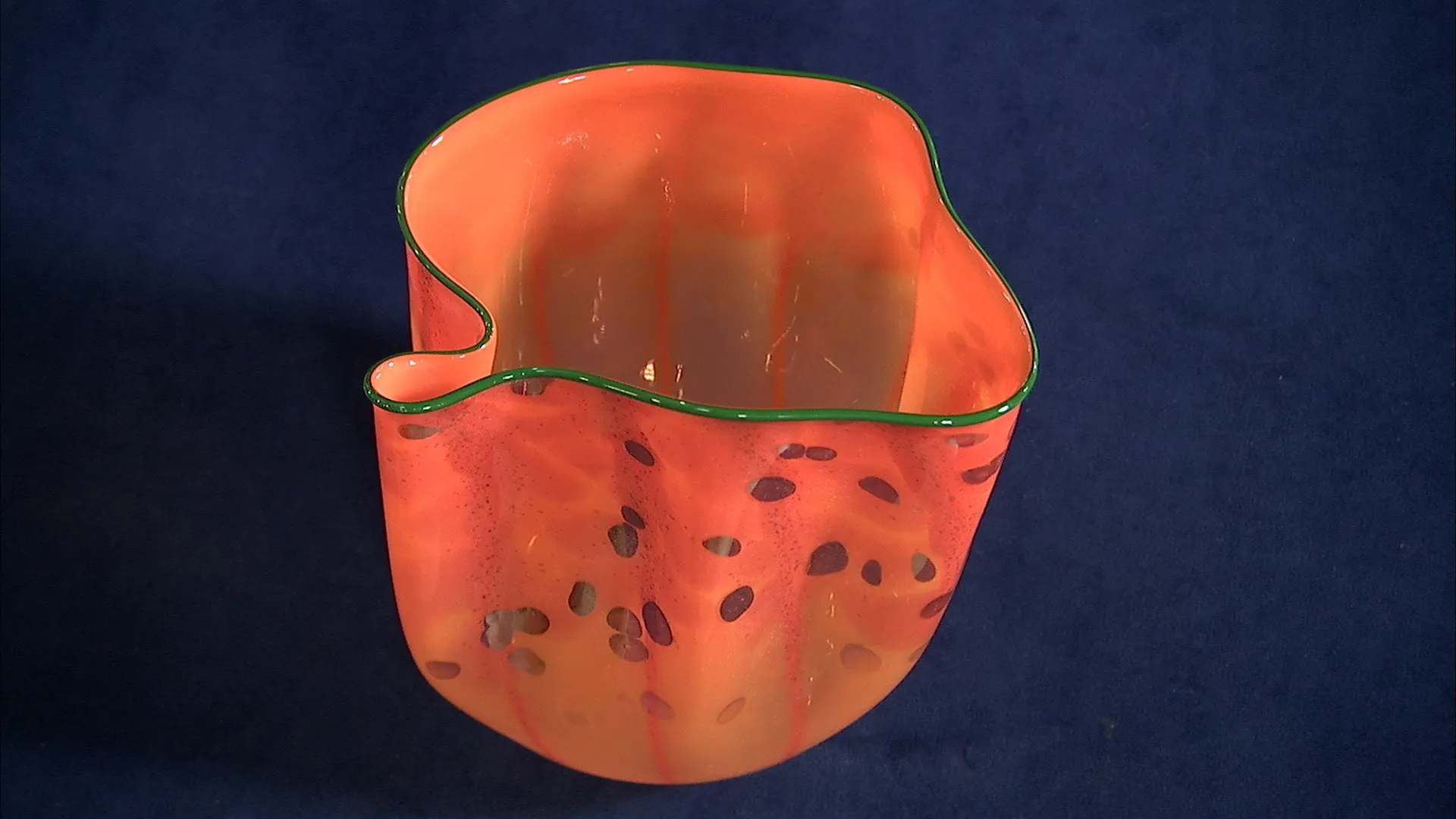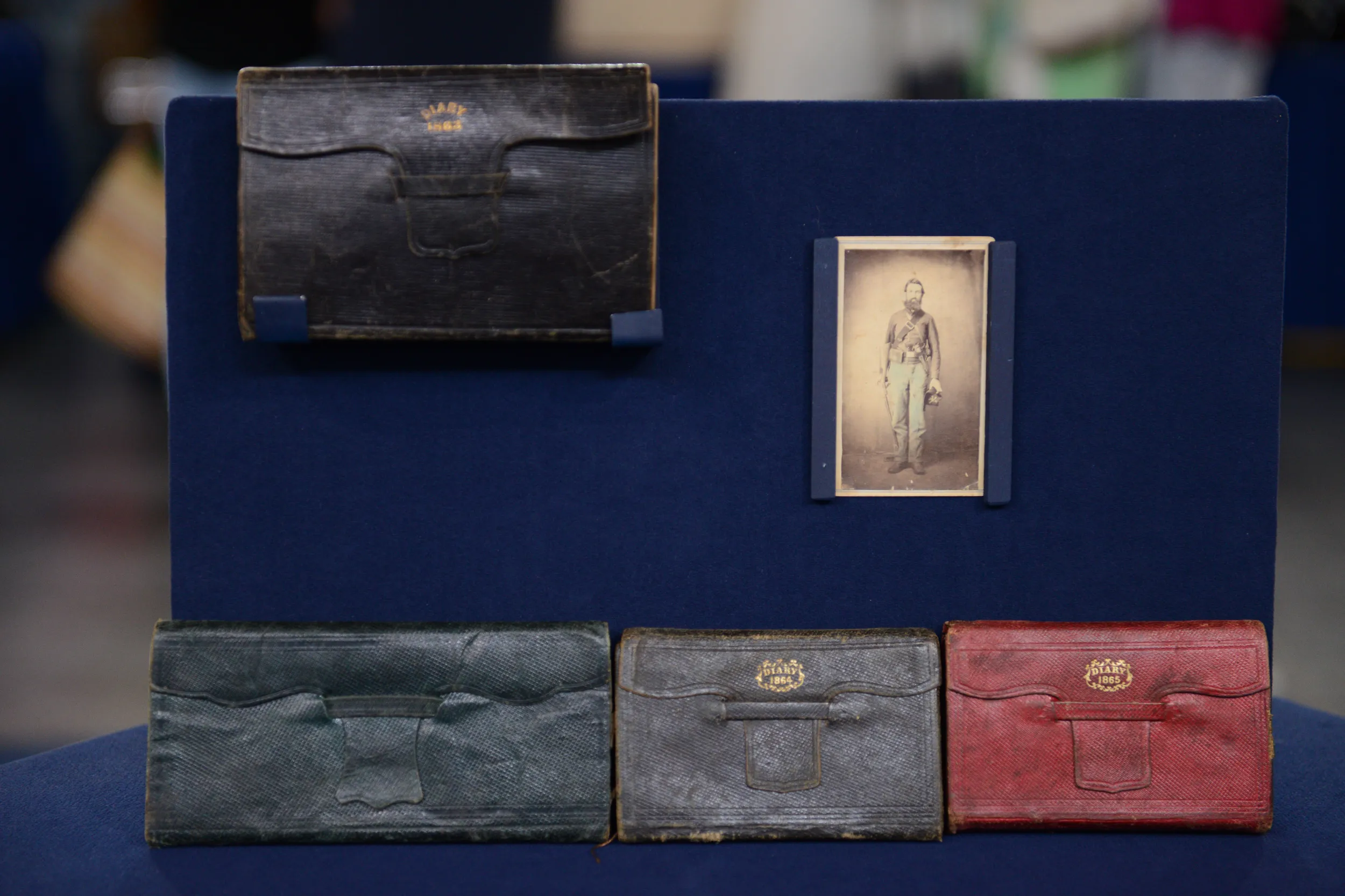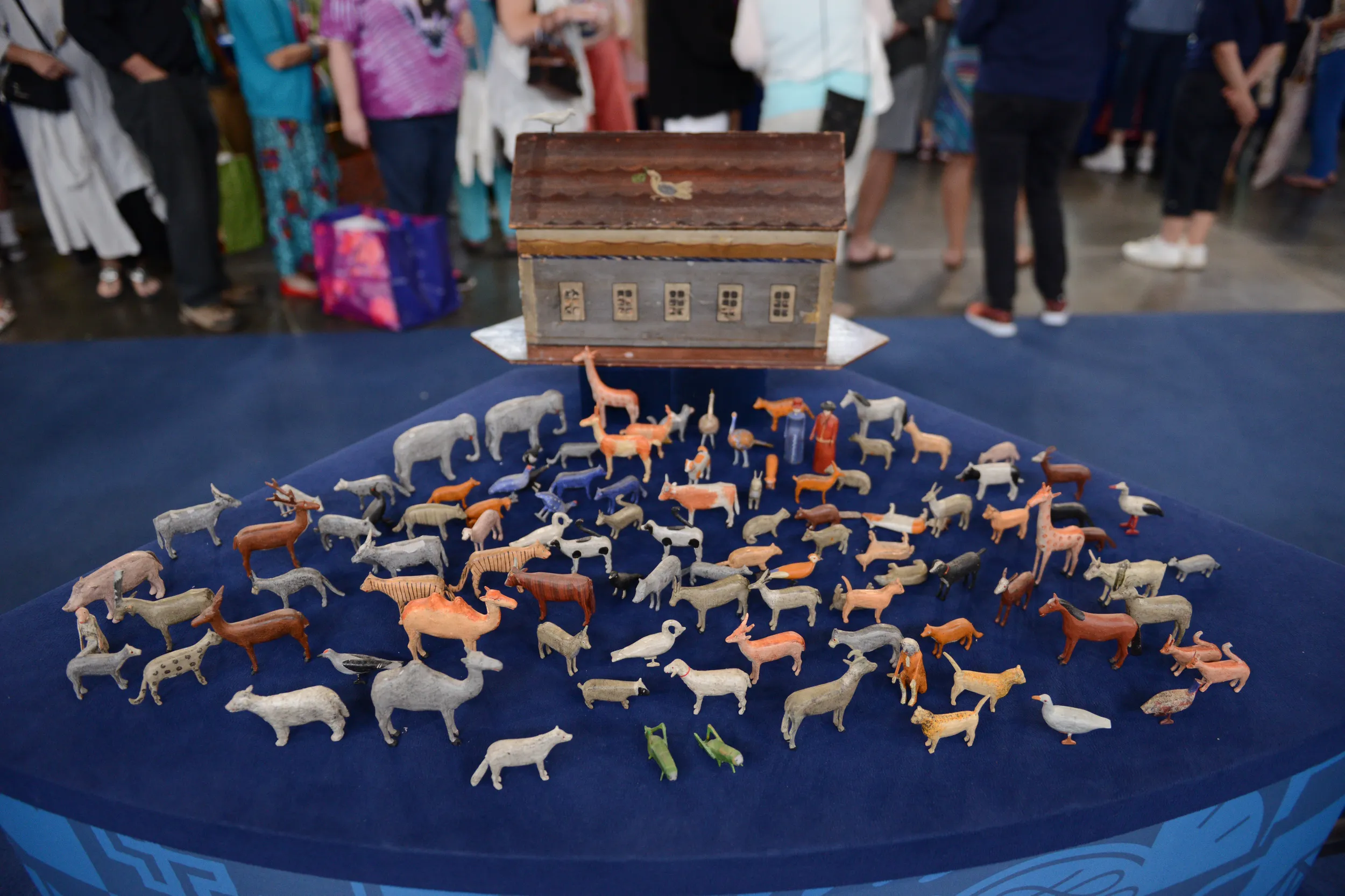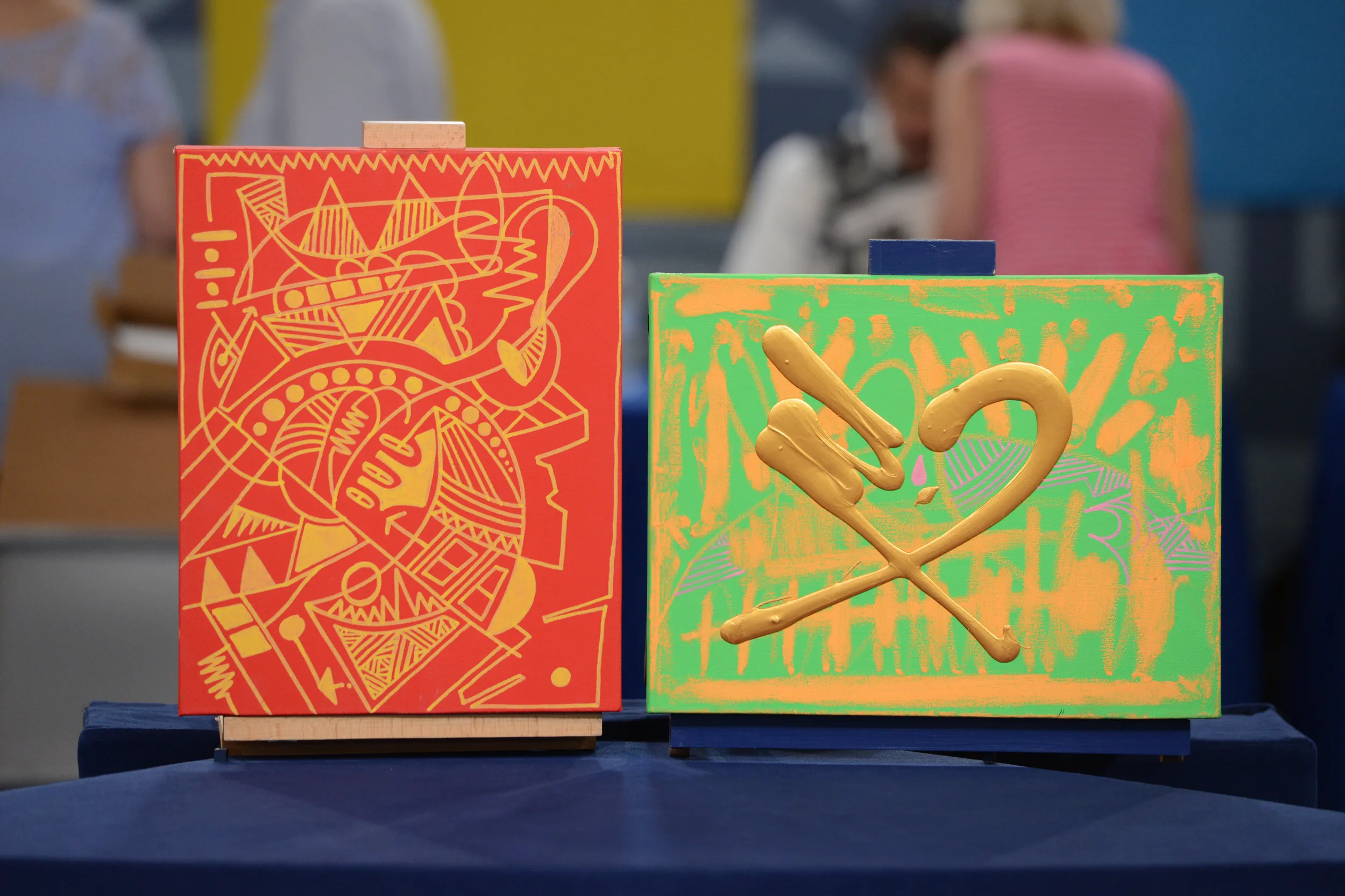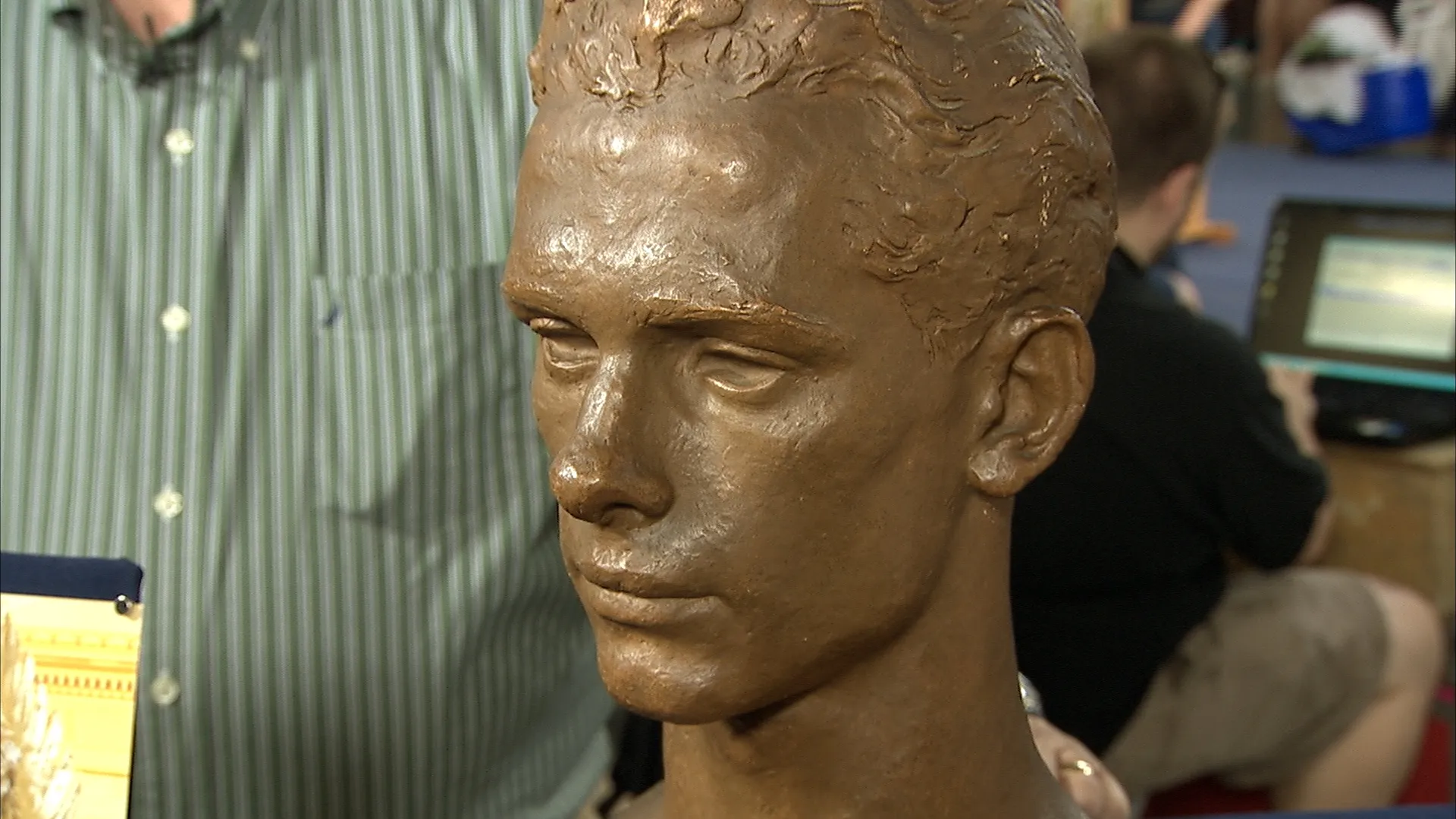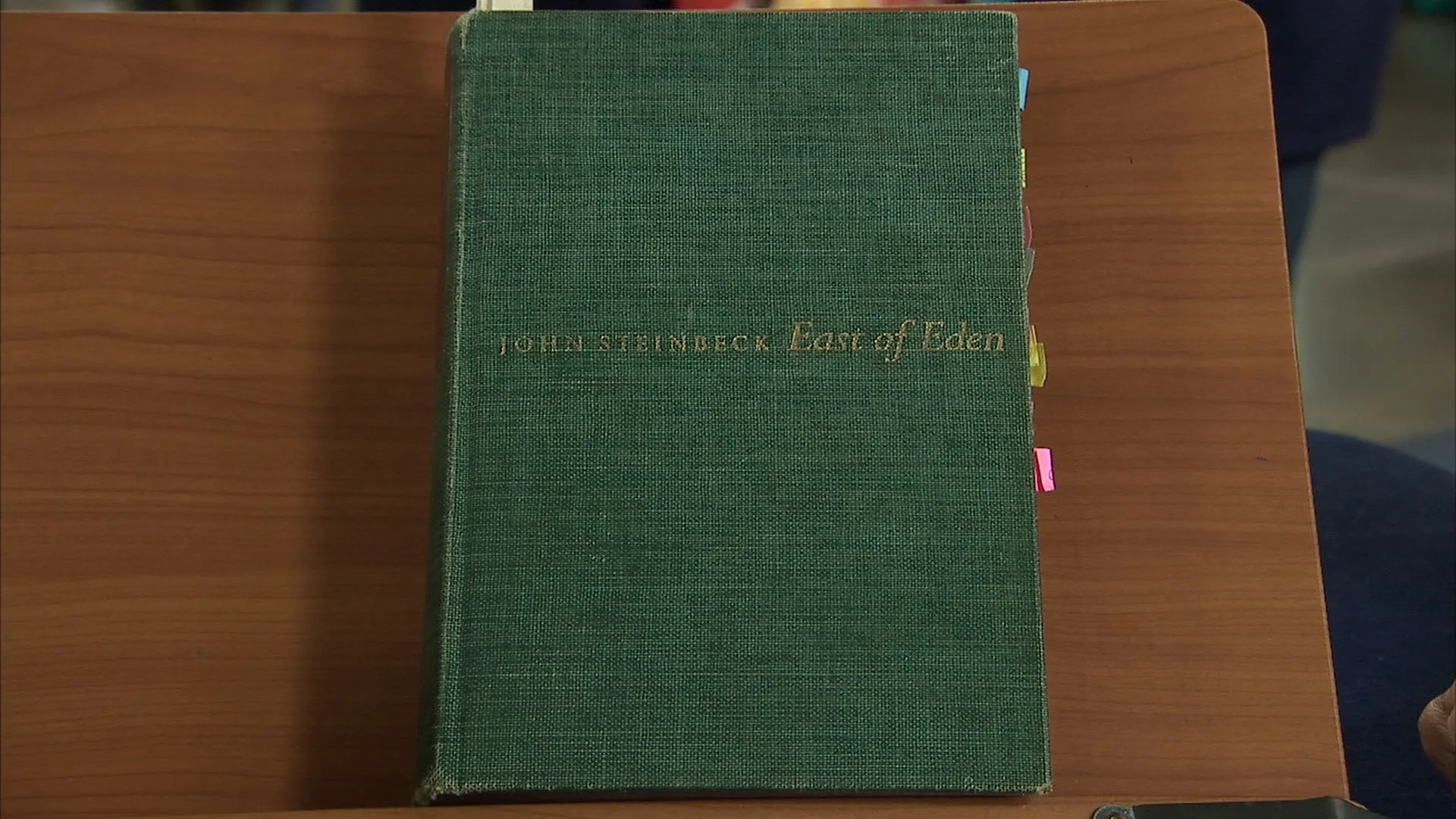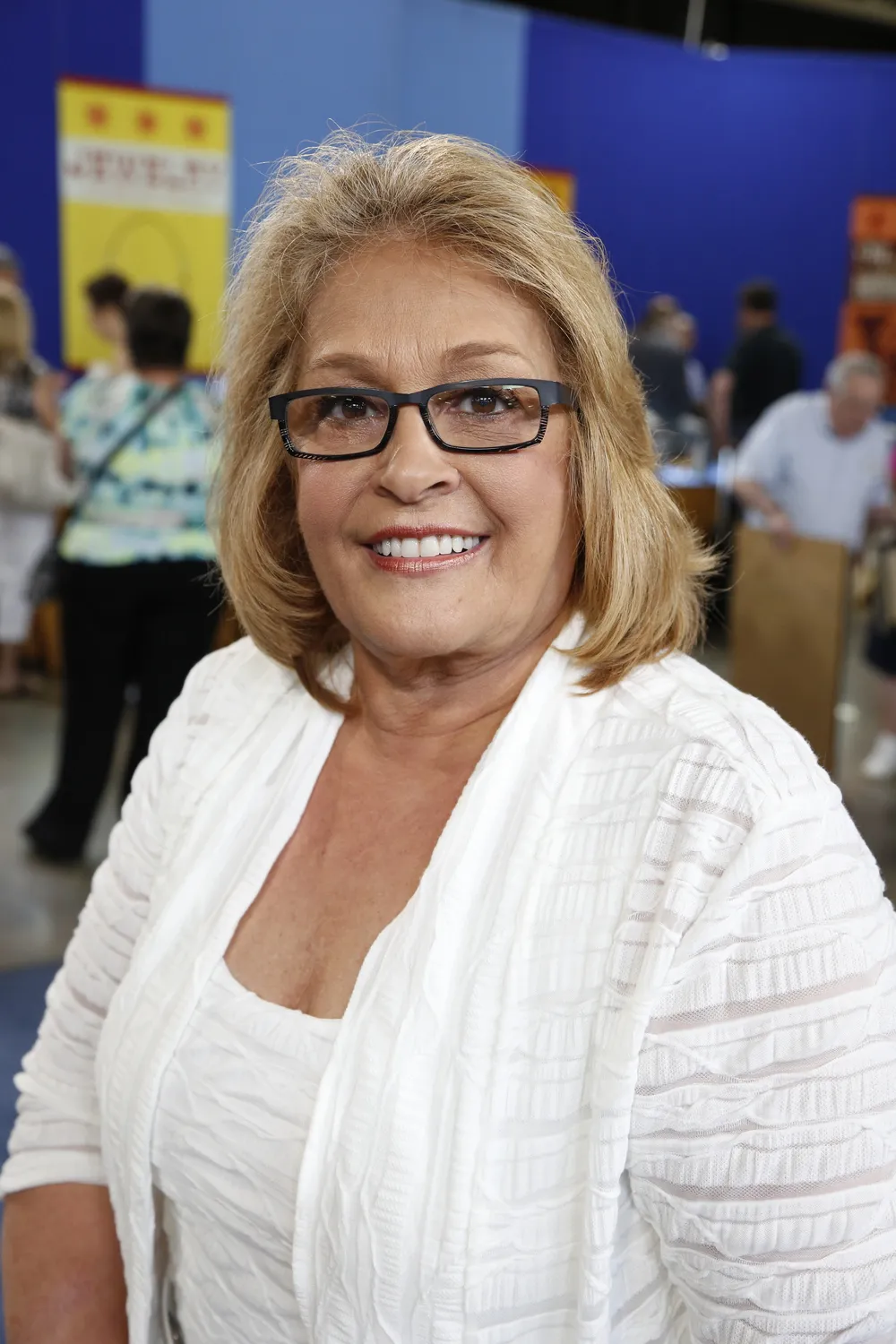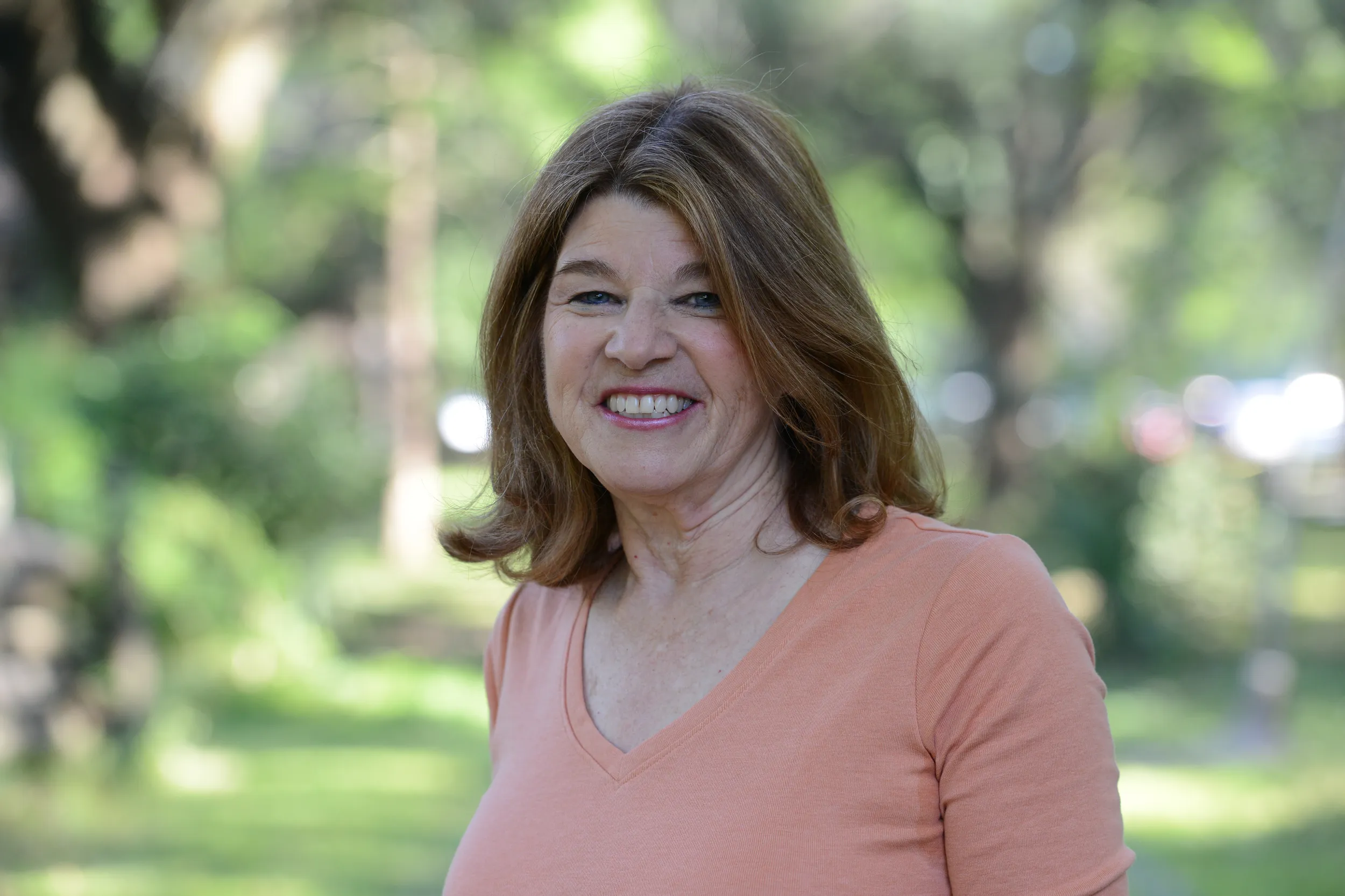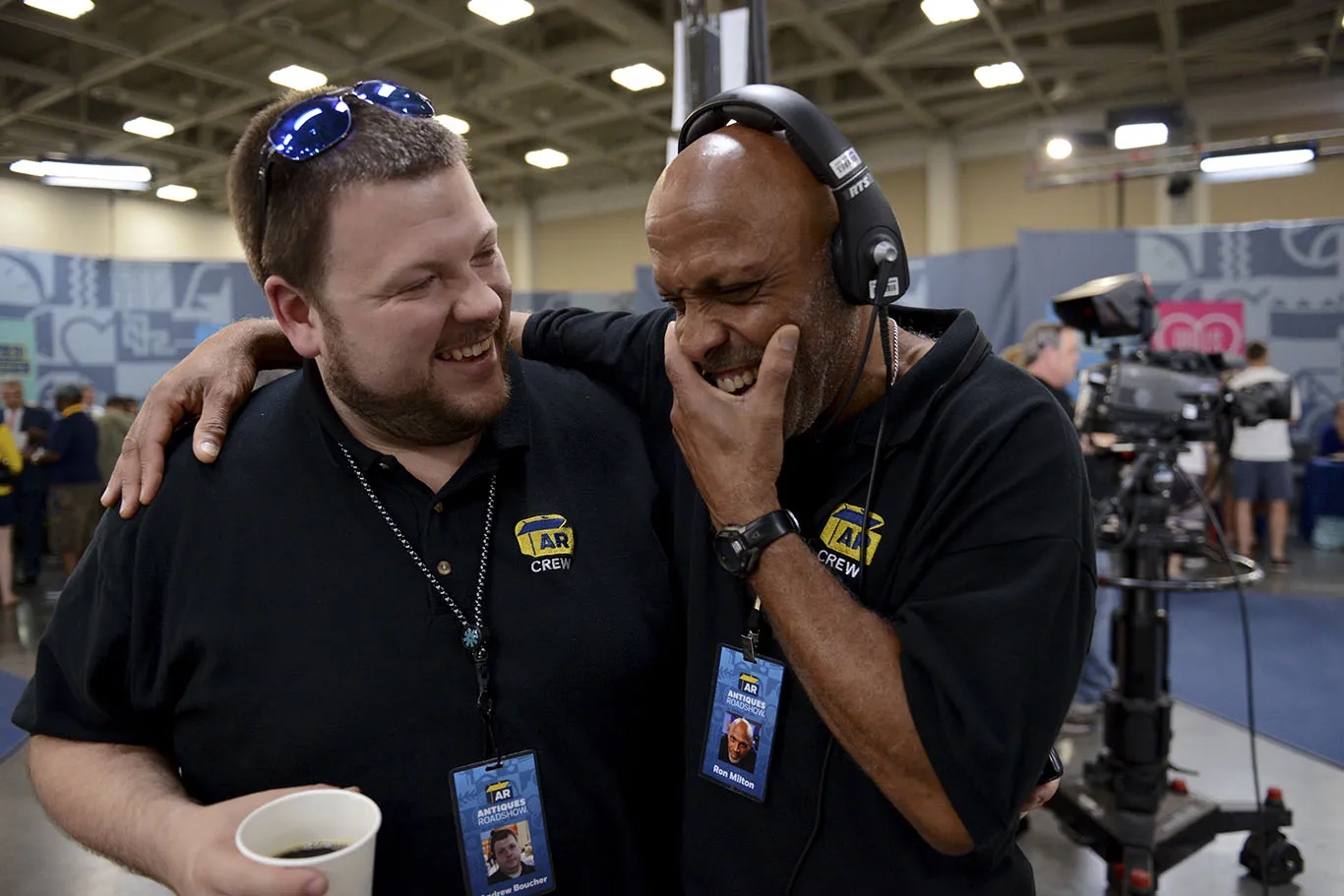HOST: ANTIQUES ROADSHOW is reeling in big treasures in Virginia Beach.
GUEST (laughing): Wow! Really? That's great.
GUEST: Wow. Well, Dad, you're right. Sorry we made fun of it all these years.
HOST: Whether you're into catching fish... ...or watching them, the creatures of the sea are a big draw in Virginia Beach. Another big draw today? Collectors of art and antiques want to find out more about their treasures. Like this guest.
GUEST: I brought a signed photograph of Cassius Clay. A lot of people know him as Muhammad Ali, but at that time, he was Cassius Clay.
APPRAISER: Okay, and how'd you get it?
GUEST: When I was around eight years old, Cassius Clay lived in our neighborhood. Probably not by his choice, but prior to him fighting Sonny Liston for the championship, he lived in our neighborhood and he would run around the park. And all the little kids would run around following him, and chasing him, and mimicking him as he was practicing his boxing. So after he would do that, he would invite us over to his house for hot dogs and Kool-Aid. We thought that was the best thing in the world. But prior to that, we had to listen to him. So he'd teach us what I now know is life stories, telling us to be good kids. And also he'd show us films about how he boxed.
APPRAISER: Of course he did.
GUEST: How good he was.
APPRAISER: Of course he did.
GUEST: And he was the greatest, and he still is. Well, until he passed away, he still was the greatest.
APPRAISER: Sure. And this was in Miami?
GUEST: This is in Miami, Florida.
APPRAISER: Okay, this is one of his fighting promotions. And he personalized it to you.
GUEST: He personalized it to me.
APPRAISER: And he wrote, "To Nat, from Cassius Clay." And then he did again, in fountain pen, right there on his legs, he wrote, "From Cassius Clay." So he twice signed this for you. He must've liked you.
GUEST: I hope he liked me.
APPRAISER: So you know what happened shortly after, after he signed this to you.
GUEST: Shortly afterward, he fought Sonny Liston, and then he changed his name to Muhammad Ali.
APPRAISER: So, of course, Cassius Clay fought Sonny Liston on February 25, 1964. Beat Liston, seven rounds. He proclaimed his faith to the Nation of Islam, became Muhammad Ali.
GUEST: Correct.
APPRAISER: There's a lot of Muhammad Ali-signed memorabilia out there. You've got something here pretty special. You've got twice-signed Cassius Clay, both autographs are very potent, they're pretty crisp. And this one's personalized to you, so it means something to you.
GUEST: It means a whole lot to me. Believe it or not, I've had it, personally in my possession, only for about 20 years. My mother had it in a drawer. Like most mothers, they keep everything that their kids bring home. She put it in a drawer and kept it in a pretty pristine condition. And so I was so glad to get it, that I had to get it framed.
APPRAISER: I hope you thanked her. Let me ask you this.
GUEST: All the time.
APPRAISER: Have you ever had it appraised?
GUEST: Never had it appraised. I never thought of selling it, and hopefully when I pass it to my son, he won't sell it.
APPRAISER: Okay-- his recent passing, it has affected the value. We think the value has magnified. How much, we'll see in time. More auctions, more sales will happen, and we'll be better able to gauge it. We think that at auction, this would fetch a price between $5,000 to $7,000.
GUEST: No way.
APPRAISER: Yeah.
GUEST: $5,000 to $7,000? Wow.
APPRAISER: We'd insure it for considerably more. We'd insure it for about $10,000.
GUEST: Wow. It's been hanging up on my wall in the house, and it'll go back up on the wall, but I have to watch who come in the house now. (laughing) Well, golly, I never thought it'd be worth $5,000 to $7,000.
APPRAISER: It's a great piece-- it's a knockout.
GUEST: These are two paintings that my father was given as a gift from the artist. My dad is an attorney who represented him, and apparently he liked what my father did for him, and he gifted him with the small one, and then he let him pick out the big one. He came to the gallery and got to pick out the one that he wanted from there, so...
APPRAISER: Now, who's the artist?
GUEST: Larry Poons.
APPRAISER: Larry Poons, indeed. And do you know anything about him?
GUEST: I know he was born in the '30s in Tokyo, and he works in New York, and that's all I really know about him.
APPRAISER: That's correct, yes. He was born in 1937 in Tokyo to American parents. I believe he's in New York now. Originally he was actually going to be a musician.
GUEST: Oh.
APPRAISER: Like many artists, you know-- you see these great bands that have come out of art schools and whatnot. So he was originally, he was going to be a musician, but ended up studying art in Boston. Back in the '60s, he was a bright young thing, he was a hot young thing. And originally was associated with the op art movement and did these paintings very different from these, with elliptical circles and dots.
GUEST: Okay.
APPRAISER: And just wonderful-looking pieces. And in 1965, he was chosen by Henry Geldzahler, who is one of the best curators of our recent times, for a pretty major survey of New York art that was held at MOMA.
GUEST: Oh, wow.
APPRAISER: So to be chosen as the youngest artist to be featured in there says a lot about him.
GUEST: Wow, yeah.
APPRAISER: Now, his work changed a lot over the years, and these date from... Do you know when they're from?
GUEST: Um... 1984 and 1987.
APPRAISER: '84 is the small one and '87 the large one.
GUEST: Yes, yes.
APPRAISER: So this is moving on a bit. I was interested to see what was written on the back of the small one here, and perhaps you could share that with us.
GUEST: Sure, it says, "To George, thanks and thanks again, George. And please visit us to pick out the larger painting. All the best, Larry Poons."
APPRAISER: So this being the larger painting, presumably.
GUEST: Yes.
APPRAISER: But I have to say, in terms of Larry Poons' work, it's not that big.
GUEST: Oh.
APPRAISER: In fact, I was at the museum, the Chrysler Museum in Norfolk yesterday, and there's a Larry Poons painting that basically took up a whole wall there.
GUEST: I didn't know that. So small for him, I guess.
APPRAISER: Exactly, it's pretty small for him. Unusual materials, I would say. It's acrylic paint, and it's rather interesting. The label in the back in fact is from a major gallery, André Emmerich. And it says, "Acrylic and accretions." (laughing) So that... that covers a multitude. I think we can see sponge here, there's paper and cardboard down here, and acrylic holding it all together. If I were cataloguing, I'd probably say "mixed media," which covers everything.
GUEST: Okay, yes.
APPRAISER: I noticed in the back, in inverted commas, was "Josh Sure," which I think we can assume is a title. It's also on the André Emmerich label, so it suggests that's probably what the title is. But we would need to do more research to establish whether such a person existed, or whether it was just something he made up.
GUEST: Okay.
APPRAISER: When I came across Larry Poons' work first, what... I actually heard about him first through a friend I'd met in New York early on, who knew him very well and used to tell me about him. So his name was already in my mind. It's an unusual name. And then when I was working in the auction business, occasionally I would handle his work. Now this is late '90s, and you could barely give them away. The market has changed now, there's a lot of demand for his work. Have you any idea what this one might be worth?
GUEST: No. Like I said, when he came home with this, I think it sort of took everybody by surprise. And we teased him a little, but he insists it was valuable. So I have no idea what that means, so...
APPRAISER: Well, this one at auction, I would suggest an estimate of $12,000 to $18,000. And for the smaller one, which I like very much, a little bit more manageable-- I would say 3,000 to 5,000.
GUEST: Wow. Well, Dad, you're right. Sorry we made fun of it all these years.
APPRAISER: Now, correct me if I'm wrong. Did you have a name for this painting in the family?
GUEST: We did, we have a name for it, and I feel really guilty telling people, but we called this "the vomit painting." And everybody in my family would know exactly what I mean when I said "the vomit painting."
APPRAISER: Well, hopefully you might give it a new name now.
GUEST: Yes, oh, it's much more appreciated now.
APPRAISER: Good.
GUEST: I have my old sombrero.
GUEST: God, don't knock over my antique. It'd be the end of our friendship.
APPRAISER: I'm going to send you to textiles with that.
APPRAISER: These are a crossover collectible. They are attractive to people who collect Navy stuff. They are also attractive to people who just simply like optics. That's a great piece.
GUEST: Yes, sir, thank you.
APPRAISER: In this case, size really matters. And in a way, smaller is better because it is more easily...
GUEST AND APPRAISER: ...displayed.
APPRAISER: I would probably put about $3,000 to $4,000 on the chickens. And probably $2,000 to $3,000 on the "strangest acts."
GUEST: Wow. That's great.
GUEST: My mother went to Las Vegas one year to visit my uncle and my aunt. When they were getting ready to leave, my uncle comes out with this belt and says it's Elvis's belt that Elvis gave to him at the Hilton Hotel years ago. And there you go.
APPRAISER: All right, so your uncle Lucky was the bartender at the Las Vegas Hilton, is that right?
GUEST: Yes, yes.
APPRAISER: And then his son was the chef in the kitchen there.
GUEST: Yeah, he worked in the kitchen.
APPRAISER: Elvis actually lived in that hotel for eight years, and so I imagine after the act was over, he probably went down to the lounge late at night and wanted something to eat, right?
GUEST: Yes, sir.
APPRAISER: And so your uncle gave him drinks, and then your cousin provided him with food. What kind of food was Elvis eating?
GUEST: He ate the banana sandwiches, just crazy sandwiches. And always wanted a piece of pie with a piece of cake on top of it.
APPRAISER: Ooh, yum. In a way, when you're living in a hotel like that and you're an entertainer, I would think that your family would have been his family in a sense.
GUEST: Exactly.
APPRAISER: Well, it's a fabulous costume piece. It's all made out of bullion wire thread. These are rhinestones. And Elvis was the dancer, and so even in his '70s period he was probably out there gyrating and sending those fringes in all different directions. We have the tie to your family, which is good, so there's good provenance there. But no writing, no photos of him or anything. So I'm going to be conservative on the estimate. I'm going to say at auction, it would be $3,000 to $4,000.
GUEST: That's... There's nothing wrong with that.
APPRAISER: Nothing wrong with that.
GUEST: Well, we just purchased this historical... it's called Green Springs plantation.
APPRAISER: Mm-hmm.
GUEST: It was built in 1772 by Colonel Richard Morris. It was hanging in this really old part of the house-- that's where it's been for a long time, I think. There were three families: the Overtons, the Morrises, and the Taylors. And they had a lot of acreage. And so Colonel Richard Morris was the commissary for the Revolutionary War for the state of Virginia.
APPRAISER: Okay.
GUEST: And so he was friends with Patrick Henry, who came to the house. We're not sure about Jefferson, but those would have been all his contemporaries.
APPRAISER: Okay. And Green Springs, the house of Colonel Morris, is near Charlottesville, is that right?
GUEST: Yes, it's about 20 minutes east of Charlottesville, yes.
APPRAISER: Okay, and this map shows that property. Now the map says, "Map of the estate of William Morris, deceased." And who is this William Morris?
GUEST: So William would be one of the grandsons of Colonel Morris.
APPRAISER: Okay.
GUEST: And what we know about him is that he died in the Civil War at the Gaines's Mill Battle.
APPRAISER: Okay.
GUEST: And he was like early 20s. He was living at the house with his mom, and his mother died a year later.
APPRAISER: Okay, so that was during the Civil War.
GUEST: Yes.
APPRAISER: Well, this is a property map, and it was done by-- the surveyor is down here-- and was done in 1865.
GUEST: Okay.
APPRAISER: So it was right at the end of the Civil War. And of course a lot of land owners in the South were very concerned about property lines and things. With the Civil War, of course there was a lot of confusion...
GUEST: Yes.
APPRAISER: ...and competing claims of Northerners, the carpetbaggers were coming down. So it was really important, especially when the estate owner died, to have that done. So this map was commissioned, and it shows the property, which is divided into different tracts.
GUEST: Yes.
APPRAISER: And the list of the tracts are down here, and they were owned by different families. And there was the house tract, which is the tract up here.
GUEST: Okay, oh, I see.
APPRAISER: Okay, and that's the house tract. And right here it says "dwelling."
GUEST: Oh, my gosh.
APPRAISER: So I assume that is where your house is.
GUEST: I guess so.
APPRAISER: And there was a barn over here.
GUEST: It's still there.
APPRAISER: And tobacco barns along here. And, of course, what is called "quarters." And we know what kind of quarters those were before the Civil War. Those were the slave quarters.
GUEST: Colonel Morris, the grandfather, he actually married his slave, Fanny, that he had six kids with. He moved to Kentucky to free them, and then those... they became part of the Underground Railroad. He wanted them to be free, and I just think that's amazing.
APPRAISER: It shows the major buildings, the various property. And interestingly, there were two tracts he owned that were slightly separated from the main property. And he has separate maps of those-- there's one down here called the "Labby tract." And over on this side, we have the "Lime tract." And you'll notice to distinguish them, he's made it look like it's a separate piece of paper. So you can see that the paper there...
GUEST: Oh my gosh, yes, yes.
APPRAISER: ...is folded up, the corner. So it's like a separate sheet of paper. So he's done this artistically, but the important thing is all the information. Now a map like this is a picture of a particular time in history. And here we have a very historic home, and the home is on the historic register, is that right?
GUEST: Yes, part of the National Park Service.
APPRAISER: It was done on paper, mounted on canvas. You can see that it's starting to flake, and of course you have this chipping. Because it's a unique manuscript map, that kind of condition really doesn't affect the value much. It historically is priceless and unique and important, but it's got a very limited market. I think if you had this at an auction that you would probably see this go for about $3,000 to $3,500.
GUEST: Okay, okay, interesting.
APPRAISER: Possibly more if you had some people really interested in Virginia history. But it's really worth historically far more than that. And for you to find it in that home is just fabulous.
GUEST: I love it. I love it.
GUEST: They've been in my family for a number of years-- many generations I know for sure. When I first remember them when I was a small child, my aunt had them all in her house, farmhouse south of Boston. I love the blue, I loved seeing them all the time. And one day she asked me if I'd like them someday, and I said, "Oh, my goodness, yes." I've had them now for about 20 years. My two children will have them after me.
APPRAISER: Well, if your family were in New England for much of their time...
GUEST: They were, and I grew up there.
APPRAISER: That would make a lot of sense. They were made in Staffordshire in the midlands of England in about 1825 or 1835 at a time when the biggest market for this kind of ware, earthenware with transfer prints generally made relatively inexpensively, was the New World, the Americas, a rapidly expanding marketplace before the Civil War. And Staffordshire supplied a lot of that. They're made of pottery, standard Staffordshire earthenware of the day. They were made by a company called Enoch Wood & Son, and Wood was one of a large family of potters in Staffordshire active at the time. And these were fairly simply made. There wasn't a high standard of manufacturing here. You can see little defects in the transfer lining. Of the three pieces, which would you think would be the most valuable?
GUEST: If I was to pick, I'd pick this one here. Only because it's got a frigate in there, it looks like an old American frigate. It only has a handful of stars on there, so I would think that was probably in the mid-1800 or early 1800s. I would guess this is probably the oldest.
APPRAISER: You'd be half right. (chuckles)
GUEST: That's better than most things I do. (chuckles)
APPRAISER: I would say of the two plates, that would be the more valuable one, and largely for the reason you suggested. With this kind of historical Staffordshire, it's really all about the scene in the middle. The scene in the middle of the plate closest to me is a made-up scene. The decorators at the time, many of them knew little about what other countries actually looked like at all. So they would make up imaginary scenes. The one closest to you does indeed have a frigate on it, and it is flying a flag, which could certainly be interpreted as the stars and stripes.
GUEST: I did.
APPRAISER: You did. (chuckling) And the jury is out on that one with respect to if it is indeed an American flag or not. I certainly believe it is. And in the antiques trade, I think we'd say it is if you're selling it, because that's what would give it more value.
GUEST: I see.
APPRAISER: But the single most valuable piece is the teapot in the center.
GUEST: Really?
APPRAISER: And the character inside is an American, perhaps the most famous of all Americans, it's Washington. Made perhaps a quarter century after he died, but still made at a time when there was an enormous amount of support and sympathy for Washington. It's a very patriotic piece from an American point of view, despite being made in England. The teapot, had we been talking about this 20 years ago, would certainly be worth more than it is today. But I'm going to give you some values that would be suitable for replacement value today...
GUEST: Sure.
APPRAISER: Beginning with, let's say, the plate closest to me. As an individual plate, no more than perhaps $40 or $50 in value for replacement. The plate closest to you, with the ship and the American flag, let's call it, as much as $400.
GUEST: Oh, wow.
APPRAISER: Or $450. Whereas the teapot, as a replacement piece, in that very good condition, close to double that, or perhaps as much as $1,000. I'm going to say between $800 and $1,000.
GUEST: Not too bad at all. I've never had a cup of tea out of it, but maybe I'll try it sometime. And I wouldn't trade any of them for all the tea in England, so thank you so much for your time.
GUEST: It was purchased by my grandfather, who was a simple man, but someone must have instructed him on what to buy. He wouldn't have known anything, or much, about art. When time came to divide the contents of his house, no one wanted this.
APPRAISER: Oh dear.
GUEST: So I said, "All right, I'll take it."
APPRAISER: What a sport! (laughing) What a sport. (both laughing) Well, the painting is by Emil Carlsen. It's signed and dated 1897. The frame I think dates a bit later than that, maybe the '20s or '30s. It's an interesting painting because Carlsen was born in Denmark, but is best known for his still life paintings that he painted in the United States. And he was very much influenced by the Dutch 17th century artists. And what he incorporated into these paintings was the idea of the animals, the pot, and, in that combination, instilling the idea that someone had just walked away from the kitchen and was coming back. So he was very well known for his still life paintings. Oil paintings, unlike watercolors or drawings, aren't affected by the light. So it won't fade.
GUEST: Oh, okay.
APPRAISER: But you don't want to keep it somewhere very hot or very cold, not unlike real estate, with location, location, location. The art world has its own hierarchy of subject matter, subject matter, subject matter. Paintings by Carlsen have sold for $30,000, $40,000, $50,000, $100,000. There's even a painting that sold for $300,000. These were still lives of flowers, bright paintings, silver, very delicate, evocative pieces. We have a saying in the business that dead game and sinking ships, not so good. That said, it's beautifully executed. He's one of the most important still life painters in America painting during the late 19th, early 20th century. It's in a signed Harer frame, H-A-R-E-R. And it's a carved wood frame that is highly desirable. So that adds to the value of the piece also. And while we're not looking at the Beverly Hills of Emil Carlsen, we're looking at a fine example of his work that I would estimate at auction between $6,000 and $8,000. And could perhaps do better.
GUEST: Well, that's great. That's a surprise. All for dead ducks. (chuckles)
GUEST: It's a part of a... You know, a movement of kitchen appliances where there are new things created for the kitchen to make your job easier. It's all aluminum, which they say today is not great to cook in. Just saying.
GUEST: Don't use it?
APPRAISER: Right.
APPRAISER: It is restorable. There are people who could put wheels on it. In this condition, you're probably looking somebody to pay $300 or $400 probably for it. If the toy were complete, it would be 600 to 800, maybe 1,200.
APPRAISER: Many marks are indicative of an actual date, but others are honorific. This is honorific. So it's a fairly recent copy.
GUEST: Isn't that a bummer?
APPRAISER: So therefore, not going to be worth very much.
GUEST: Okay, thank you so much.
APPRAISER: You're welcome.
GUEST: I was looking for stamps in a dumpster, because I collect stamps, and I found this in a tissue by accident. The only thing that I know-- well, I think I know-- this was back in '79 and '80. Me and my wife, we'd go to the library and look up dolls trying to figure out what it was. And the only thing we came close to see was a set of six, and this was the smallest-- an inch and a quarter. And it was from 1790. Now, I have no idea if that's what it really is.
APPRAISER: This doll is an early 1800 to 1850 peg wooden, and it has a yellow tuck comb. She is, like you say, an inch and a quarter long. They were made in Sonnenberg, Germany, and Grodenthal, Austria. The rarity to this particular piece is the size, the condition. She has a yellow comb, hence the name yellow tuck comb. And you can see her hips are jointed, her arms are jointed. Everything in her has these little mortise-and-tenon joints. And that is just wonderful. She is a delightful piece. I am so glad you rescued her. It is a piece that today at an antique doll and toy show, would be between $1,200 and approximately $1,500.
GUEST: Oh, that's good.
APPRAISER: Yes, that's good.
GUEST: Out of a dumpster, I guess that's pretty good.
APPRAISER: That is pretty good. I'd say you're a good dumpster diver. (laughing)
APPRAISER: I have a feeling you were young when you started to play the violin.
GUEST: I was about 12 years old and played through high school. I expected to become a concert violinist, and instead went on to be an engineer.
APPRAISER: So you were serious. You had a good teacher, too?
GUEST: I had a great teacher. He was a violinist, concert violinist in his own right. He's the one that got me interested in trying to get a good violin to go on to a music career.
APPRAISER: I suspect your parents must have taken you seriously in order to fund a new violin.
GUEST: They did-- they made me get a paper route and work to pay for it.
APPRAISER: That's great. So where did you find this violin?
GUEST: My music instructor had gotten multiple violins on consignment from a violin house in Chicago. We played them and we made a decision on which violin to keep, and this is the one we settled on. We got it in 1962, and it cost about $1,200, a lot of money, especially for somebody like myself. It was alleged to be an early 18th-century violin made in, I believe, either southern France or northern Italy. I had no reason to doubt that. Later, about two or three years ago, I had it appraised, and at that time, I was told that it was a reproduction, a late 19th-century reproduction of an early 18th-century violin.
APPRASIER: What was it valued at when you received that second appraisal?
GUEST: The second appraisal told me it was worth about $2,000, which was okay, but wasn't enough. I considered giving it to my granddaughter, who was just taking up the violin in junior high school, and I was going to let her play it through junior high. That's what I know about it today.
APPRAISER: Well, I did a little calculation about what $1,200 in 1962 would be worth today, and I got to the figure of $9,600.
GUEST: That'd be about right, so I was disappointed.
APPRAISER: Well, when I saw this violin, I thought, "This is a serious violin," and so I'm not surprised to hear that you were a serious violinist. And I looked at the label, and it said, "Heyndrick Willems," from Ghent, which is in the Netherlands, and it had a date of 1728. And I looked further at it, and I realized it was from the Netherlands. It's a Holland maker. And it's not an 18th-century violin, but it's an early 19th-century violin. And the maker is from the Cuypers School, so there was a family of makers in the Netherlands that spanned three generations, and they were the Cuypers. And they did beautiful work. What I want to do is just point out a few things that I think indicate that it is Cuypers. School. And that is the varnish. So if you take a look right back here, you can see that there's a certain kind of a dry scaling pattern that's very typical of the varnish of the Dutch school. So they used a glue ground underneath the varnish. And that, over time, creates this kind of dry, scaly look. And then if you take a look at the purfling, the purfling is done in a very masterful way, and it's extremely difficult to do. It's a very bold, very black purfling, but it's done beautifully.
So this is not an inexpensive instrument at all. This is an instrument of considerable class. I can't say with absolute certainty that this is a Cuypers, so I would call it a Cuypers School violin. The label's a false label. I think that somebody recognized that this is a Dutch violin and put a Dutch label in there at some point. This is not a reproduction of an 18th-century violin. This is a really fine, very serious, classy violin made in about the 1820s. The belly is spruce, and then the back... Is a particularly beautiful maple. It's flamed maple-- you can see the flames running across the back. And the value today, a conservative value in the retail market would be $25,000.
GUEST: Oh, great-- that's a lot more than I thought it was. Thank you very much for that good news.
GUEST: What I brought today is an Ever-Ready Safety Razor display that I have looked at since well before I could shave. My parents bought it at an antique mall very close to where they live in the late '70s for $65. I frequented flea markets and antique malls and antique shows with them for years, and as you get older, you get an appreciation for what your parents do, and I would see other things that I recognized from their display, but this is something that... I'm 32 now, and I haven't seen another one, so I brought it here today to find out a little bit more about it.
APPRAISER: Well, starting in the late half of the 19th century, there was several companies producing most all the blades in the country. Then, starting around 1905 to 1906, we had the Ever-Ready company name start to be used. This piece, we believe, would be somewhere around the 19-teens or '20s. This is a tin die-cut store display made for use on the counter, so this was loaned to the store, of course, that was selling their product, and it says on the back that it's owned by them still, by the razor company.
GUEST: Oh, so are we legally allowed to own this?
APPRAISER: Oh, by now, yes, by now, a hundred years later, yes.
GUEST: All right, all right, that's a relief. (laughs)
APPRAISER: American Safety Razor Company, that's the parent company for Ever-Ready. We see "American Safety Razor Company, Brooklyn, New York." This is where the product would be accessed on the countertop display. Based on the materials, the printing, I would put the date on this at the late teens, possibly into the 1920s. Their patent dates for their blades were between 1912 and about 1934, that they were using the Ever-Ready name. And then the Ever-Ready radio blade is going to pinpoint it more down to about 1918-1919, to maybe about 1928. Your father had a great eye. This particular counter display, there's, well, perhaps one or two a year that we see. It's very desirable, has fabulous graphics, with the gentleman there. Did you have any idea of the value?
GUEST: Not really, I... Maybe a grand or something like that? It would be fantastic if it was worth that.
APPRAISER: Yeah, it's a very rare countertop display item. And this one we would expect to sell for at auction between $3,000 and $4,000.
GUEST: Wow-- really? That's great. Uh, it's... Three to four grand, whew. My parents did have a good eye.
APPRAISER: Yeah, at auction. The last one sold for a little over $4,000. The one before that sold for almost $5,000.
GUEST: My grandfather, my father's father, was friends with Hugh Lofting, the author of Doctor Dolittle. He inscribed books to my father and they were read, obviously.
APPRAISER: And the drawings?
GUEST: I don't know if they were given for a purpose or an occasion, but this one is the cover of this book and that one is a plate from one of the other books.
APPRAISER: Which I'll actually show, that right in here is the illustration for that one, which is, beautiful colors on it. And every book has an inscription, and he drew little drawings in them. Why were they friendly? How, what was the association?
GUEST: My grandfather was in the movie business. Both of my grandparents were. He was a screenwriter, and I think that that is how they knew each other, just professionally, to begin with. I don't know if Hugh Lofting was in Hollywood-- that's where my grandparents were, in Hollywood.
APPRAISER: You have a number of correspondence and letters.
GUEST: Yes.
APPRAISER: And they were talking about movies?
GUEST: Right, so my grandfather knew some people at the Disney studio, he was trying to hook Disney up with Hugh Lofting to some sort of venture.
APPRAISER: This is a very interesting collection. First of all, people love Doctor Dolittle. And whenever a movie comes out from a book, and especially when the movie's successful, that increases the value. Also, the books were incredibly popular. I mean, when you get a series like this and you see Doctor Dolittle here, Doctor Dolittle there, well, that means that the books were selling, and they were telling him, "Get me another one, get me another one." So people collect Doctor Dolittle books. Ideally, they'd be in mint condition, but one of the types of books that are normally in the poorest condition are children's books, because children read them. You have the books, they're varying editions, they're all in the early '20s and that period, signed. But what you also have that is really nice is, you have the two illustrations. They're signed on the back to your grandfather.
GUEST: Yes.
APPRAISER: This one is big, colorful, but it's an interior illustration. On the other one, though, the Doctor Dolittle's Post Office, you have the cover illustration. He did all the illustrations himself. The nine books that you have here, they'd probably run in the $2,000 range for the nine books. The letters would be in the $500 range. His illustrations don't show up. This one would, I would say, is about a $2,000 illustration. It's beautiful, but even though the other one's smaller, you have the cover illustration. It's probably about a $4,000 illustration. The price, if you add it all up, it's $8,500 at a retail level, and it's just a fabulous collection.
GUEST: Well, that's great! My brother and sisters are not getting any of this.
APPRAISER: It's a decorative reproduction, basically.
GUEST: Okay.
APPRAISER: Maybe in the neighborhood of $100 to $200.
GUEST: Okay, well, thank you. Thank you.
APPRAISER: These are out there, anywhere from $3,000 to $5,000. It's a very popular guitar because it's a cool vintage guitar, and the cost is not prohibitive for a player. That's a really nice guitar.
APPRAISER: Well, it kind of almost is, like, mohair. I used to have a whole flock of Angora goats, so I kind of know about their hair a little bit. I can see them asking for easily, like, $100, $150 for this.
GUEST: She's going back in the attic.
APPRAISER: Just back in the attic! Not out on the wall now?
GUEST: She's kind of creepy.
APPRAISER: Oh, I think she looks like a fun gal.
GUEST: Okay.
GUEST: I bought it at a thrift store about three years ago. I turned it over and I didn't see a label, so I thought, "Well, maybe it isn't," but it really looked like a Stickley. The price was good, so I decided to get it.
APPRAISER: Okay, what did you pay for it?
GUEST: Well, it was half-price day, so the original price was $25, but I paid $12.50 because it was half-off.
APPRAISER: $12.50, okay, okay, good.
GUEST: Yes, Wednesdays were half-off days, so...
APPRAISER: Well, good eye. So it does have a couple of labels on it. The one under here is the early craftsman label for Gustav Stickley, so you were right on target with Stickley. There's another label on the back. Those two Stickley labels tell us that this is produced by the Stickley shop in about 1904 to 1907, so it's a good early Stickley chair. This is a tall-back spindle chair, and it's got a lot of things going for it: simplicity of design, purity, integrity in the way it's made. All of those things are really embodied in this chair. Great original surface here, and in Arts and Crafts furniture, that's very important. These occasionally do come up at auction. On the current market, I would expect this chair to bring between $2,000 and $3,000.
GUEST: Oh, great.
GUEST: It was, I believe, my great-great-grandmother's, and the women in my family on my mother's side were all born and raised in Hawaii, and so this was from my great-great-grandmother in Hawaii. My mom told me that it's a Chinese celadon vase, and she said that it's very old because it doesn't say, "Made in China."
APPRAISER: She's right that it is old, and on the point of "Made in China," that was for export in the early 20th century, late 19th century, but we're aware of exceptions where 17th-century tables have been inscribed with a knife, "Made in China for export," so there are a few exceptions. It is a celadon vase, she's quite right, and it is Chinese. These celadon vases started in China in the 14th century. The celadon glaze continued on until today. Now, there are a few things we look at before we attribute a date of production. Firstly, this is a carved porcelain that's then been glazed. Now, as we start from the top down, we have a geometric ground and then a lingzhi or Ruyi band to the neck, and we see little dots to the center in a very fine outline, a double edge, so beautifully carved. Time was taken in this. Then we come to a leaf lappet band, a Greek key, and then the central panel is framed by twin lotus petals.
Now, as we look to the center, there are two or three Buddhistic lions chasing curled ribbons. And the ribbons are beautifully carved. You can see them overlapping and there's an undulation, well-shadowed. As I turn it over, with caution, we see a white porcelain foot, we see a very worn, rough, and discolored foot rim, and we see some discoloration to the porcelain ground, this coffee hue. Now, with porcelain, it does get scratched, it does get worn. At times there is a discoloration, so moisture, dirt does enter into the ground. But when one sees scratching to the outer body, when we see a worn foot rim and discoloration to the porcelain ground, these are all really good signs. And we call this, it's an honest vase. Now, this bottle form, this slender neck leading into a bulbous base, is a typical 18th-century form. It's not an early 14th-, 15th-century vase, but it was produced during the high point of Chinese decorative arts, the very best decorative arts done in the 18th century. I would think today, in a retail setting, it would be worth $25,000.
GUEST: Wonderful. You've made me very happy.
GUEST: I believe that this was my great-grandmother's doll and carriage. I got it from my grandmother, and all she said was, "This belongs to the family, so it's yours."
APPRAISER: I'm going to turn it here a little bit to show what fabulous condition it's in. Did your family, any of them come from Germany?
GUEST: No, actually, the lady who had it was probably Irish.
APPRAISER: Well, this carriage was made in Germany by a company called Märklin. They made tin toys from 1895 to 1905, tin toys and these wonderful carriages that are highly sought by collectors. This one is unusual because it still has its top here, and most of them have lost their top.
GUEST: Yeah, I can imagine.
APPRAISER: And it has absolutely no repaint anywhere on it, and most of them have lost their paint. So this is a very fine example. Also, a lot of times, they've lost this wonderful little wood handle.
GUEST: Ah.
APPRAISER: So the retail price on this buggy would be $3,000 to $3,500.
GUEST: Wow.
APPRAISER: Did you know that?
GUEST: I did not have the slightest idea about that, no.
APPRAISER: So somebody gave you something wonderful.
GUEST: Absolutely, yes.
APPRAISER: The little doll is from Germany, also, and it was probably made in the '20s. Or the teens. It's a little newer than the carriage.
GUEST: Okay.
APPRAISER: And she's got sleep eyes and a bisque head, composition body, and it looks like she's got her original clothes that somebody crocheted for her.
GUEST: I would think so, yeah-- probably my grandmother.
APPRAISER: And she would sell at retail for $125.
GUEST: Wow, good. Thank you.
GUEST: Well, my uncle was in World War I. He was in France, and at the end of the war, he stayed over there for a while, and he purchased this before returning home.
APPRAISER: Okay.
APPRAISER: It represents a time when these were very much in fashion, and everybody wanted one. The Native Americans had much gutsier-looking ones. They had more silver, less turquoise. You'd probably get $600 to $800 for it.
APPRAISER: What makes this interesting is, it is on vellum and the fact that it's all decorated. And my sense is that it's probably 18th century. Pieces just don't, you know, they don't survive.
GUEST: Yes.
GUEST: There was an estate sale, and I usually get there really early, so I'm, like, the first one through the door, and there it was, and I fell in love with it from the moment I saw it. I said, "God, this is a wonderful piece!" And I had never seen anything like it. All I knew, it was a Chihuly piece, and I'd heard the name before, Chihuly...
APPRAISER: Yeah.
GUEST: And I said, "Oh, that's something that should be worth something."
APPRAISER: Dale Chihuly is one of the most important contemporary glassmakers in the country. You've probably seen him in many museums across the United States. He was born in 1941, is a Washington state artist. He really brought glass into an art form. He started the Pilchuck Studio back in 1971 and has been making these incredible art glass works. We've got the signature and it's dated, 1997, so we actually know when it was produced. And the other really neat thing about it is it can sit in two positions. So how do you normally have it at home? We've got that one and we've got that one, so...
GUEST: The forward one, yes.
APPRAISER: The forward, okay. How much did you pay for it at the estate sale?
GUEST: I bought it about eight... eight, nine years ago, and I paid probably 100, 100 and a half, but not much more than that.
APPRAISER: The color's fantastic. I love all this sort of silvering. It is an incredible art glass vessel. At auction today, I would give an estimate for it of $2,000 to $3,000.
GUEST: Oh, great.
APPRAISER: So you did well.
GUEST: Thank you.
APPRAISER: You did really well.
GUEST: I brought in my Civil War journals from my great-great-grandfather. His name was Russell Kimball Stanton.
APPRAISER: What unit was he in, do you know?
GUEST: It was... oh, and I don't even remember now.
APPRAISER: You don't even remember? That's okay.
GUEST: He was in the Michigan one.
APPRAISER: He was in the 6th Michigan Cavalry.
GUEST: Yes.
APPRAISER: The 6th Michigan Cavalry was formed in 1862. It came into service just before the Battle of Gettysburg in June, July of 1863, and it was under the command of Brigadier General George Armstrong Custer, who commanded the brigade, the Michigan Brigade, and they were called the Wolverines. I don't know whether you've read anything about Custer at the Battle of Gettysburg, but that's where he really got his name.
GUEST: That's a major... yes.
APPRAISER: So your ancestor served through the entire war. He served in 1862 and kept a journal, 1863, '64, and '65. So he kept daily records of everything through his whole service in the war. In 1863, in June and July, he's talking about the prelude to the Battle of Gettysburg and being in the Battle of Gettysburg. So there's some great things in there. And in 1865 he's actually at the surrender of General Lee's army at Appomattox, Virginia.
GUEST: Oh, wow.
APPRAISER: That was on April 9, 1865, and on April 10, he talks about a salute being fired over the surrender of General Lee and the Rebel Army of Virginia.
GUEST: Oh, wow.
APPRAISER: We talked about it a lot. It's not something we commonly find that you have his journals through the entire war and an image of him. We figure, conservatively, at auction, in the $4,000 to $6,000 range.
GUEST: Wow.
APPRAISER: Yeah, yeah.
GUEST: Wow, very good-- I had no idea.
APPRAISER: Yeah, well, we run across common single copies of this that don't have a lot of information, but there are some wonderful things inside here, as well as everyday daily weather and such, but there are some wonderful things inside. ‘
GUEST: All right, very good-- thank you so much.
GUEST: My late husband gave it to me as a Christmas gift in 1996.
APPRAISER: Where did he find it, do you know?
GUEST: I believe he bought it in Connecticut.
APPRAISER: Are you an animal lover?
GUEST: I do love animals, yes.
APPAISER: I'd be thrilled if somebody loved me to such an extent that they gave me a Noah's Ark full of animals.
GUEST: No, no, it was a wonderful gift.
APPRAISER: Do you have any idea at all at the time what he paid for it?
GUEST: He did not share that with me. I've always wondered.
APPRAISER: This is just a sampling of what's inside. Most of these were made in Germany, and I think they achieved their sort of maximum popularity in the mid-19th century. It is said that because it's... the story's a Biblical tale, that many children were allowed to play with these only on Sunday, if you can imagine, and that may be one of the reasons why oftentimes the animals are in pretty fine condition. I suspect that in a household this was a very treasured toy because these are relatively fragile. Looking at the color of this infinite variety of animals and the condition, one can only surmise that they spent most of their time in the ark. And we have, if I can very carefully open this up, you can see that we have as many inside the ark as we have outside. This is only an hour show, so we were limited as to how many we could put out. These were exported to America in great numbers, so they're not rare, but arks that have managed to survive with the original painted surface and with so many animals in superb shape, as compared to a lot of them, this is a great set. These arks were produced... a cottage industry, if you will. So they were produced in some numbers, but probably by quite a large number of people. And as I understand it, there were people who simply carved one species. And the person who carved the animal then might pass it over to somebody else to have it painted, so we're looking at a real collaborative effort here. Ultimately, very successful. Now, when you get home, are you going to set the animals up once again?
GUEST: I am-- they were in a corner cupboard, and I'm sure it's probably going to take me several hours to put them back in pairs.
APPRAISER: So we did a little quiz amongst our people at the folk art table, and in an auction situation, the Noah's Ark would be estimated in the $4,000 to $6,000 range.
GUEST: Oh, my. It's very special. Wow, well, I always felt it was a very special gift from him, and it's something my family will always cherish.
APPRAISER: So I see you've brought in two paintings by the young Saudi Arabian artist Abdullah Qandeel. And I would love to know a little bit more about how you came to acquire these.
GUEST: Well, I was at a charity auction in New York. I was standing by one of his pieces, and I was curious about the work. I hadn't heard of the artist before, and it turns out I was talking to his manager, who said, "We're headed to another show, actually, "for a friend of Abdullah's. Would you like to join us?"
APPRAISER: Fortuitous.
GUEST: And I said, "Of course." So off I went. It was a really interesting show. Little did I know they had pieces of his work that were going to come out on exhibit in a separate show within a couple of days. They took me behind the scenes, and we started looking at pieces. And he said, "Would you consider taking one home?" And these two really stood out to me. He said, "Why don't we make tonight your night?"
APPRAISER: Was there any kind of backroom negotiating that you went through to acquire these?
GUEST: A little bit. He was very sweet. I had told him, unfortunately, I had lost my wife to breast cancer about three years ago.
APPRAISER: I'm sorry.
GUEST: And the story, I guess, connected with him. This piece, he said, was called, "Love." It seemed to sort of fit. I said, "Look, I'm a person of modest means. "I appreciate art, but I don't have much of a collection. "I'd love to take something home, but I don't know what I can afford." And so we went a little bit of back-and-forth, and he graciously said, "I'm going to make your night. You can take these two home."
APPRAISER: And what year did you purchase these paintings?
GUEST: I bought them in spring of 2015.
APPRAISER: Okay.
GUEST: This one is simply known as "Red," and this one is "Love."
APPRAISER: The artist, as we've said, is Abdullah Qandeel. He's quite young, he's only in his late 20s, I believe. Maybe 27, 28 years old, of Saudi Arabian descent. But really an international character, traveling all over the world, and often living in and out of hotel rooms. And one of the things for which he is most famous or infamous, depending on your point of view, is, when he stays in these hotels, he will often take the hotel art off the wall, repaint it, make it a Qandeel original, or even paint the literal walls of the hotel. And, in fact, in 2015, he was arrested for vandalism after he painted the walls of his hotel room in a Manhattan hotel. Though, given what we all know about hotel art, perhaps the hotel should have been a little happier that he gave them some Qandeel originals and maybe increased the value of some of the art there.
The market for Saudi Arabian art and Middle Eastern art in general is a market that is growing. There's a demand for it that there has not been before. There are a lot of Middle Eastern and Saudi Arabian collectors who are looking for art of their own national origin, and are putting a lot of their resources and finances into that. A number of his pieces have been selling far beyond their estimates at auction recently. What did you pay for the two of them together?
GUEST: I paid $15,000 for the two.
APPRAISER: For the two? I think that if these were to come up at auction today, we might put an auction estimate on these of $25,000 to $40,000 each.
GUEST: Wow!
APPRAISER: And we might very well expect them to do much better than that.
GUEST: That's wonderful, thank you.
APPRAISER: So I think you got a good deal when that man made your night.
GUEST: Indeed!
HOST: You're watching ANTIQUES ROADSHOW from Virginia Beach. What's your take on something you just saw on the show? Find us on social media and join the conversation. Coming up, folks recap their ROADSHOW experience in the Feedback Booth right after this.
HOST: And now, it's time for the ROADSHOW Feedback Booth.
GUEST: I won this in 1963 and it's signed by the Baltimore Colts, and it was worth $3,000 to $5,000. Touchdown!
GUEST: I brought this box and I can't make out what it says and I was hoping someone could tell me. But since no one could tell me, it's going to be firewood tonight.
GUEST: I only spent about five bucks for him 20 years ago, and he is worth about 40 bucks now, so, "Yay!"
GUEST: And this is our monk, who we thought would give us divine inspiration, but instead, he stuck to his vow of poverty.
GUEST: Just like us.
GUEST: I learned today my long rifle's value has long gone. (laughs)
GUEST: But my books were the real surprise. They're more valuable than we realized.
GUEST: I got this piece of art here that someone was trying to throw away, and our favorite appraiser, Nicholas, appraised it for 500 bucks.
GUEST: Yeah.
GUEST: And we had a great time here at the ANTIQUES ROADSHOW. It's a dream come true.
GUEST: These are 456 Pick-Up Sticks. Um... I... The appraiser said they were worth $25. My dad warned me not to poke my eye out, though. Or stab my brothers in the face.
GUEST: We have our friend here, Willie. He sits in our family room, and every day he scares my mother-in-law, so we're happy with him.
GUEST: We brought our first-edition Christmas Carol...
GUEST: And my Babe Ruth baseball, and I'm happy to say, even though we're not millionaires...
BOTH: We're thousandaires.
GUEST: Have a great time! Thanks, Virginia Beach!
HOST: I'm Mark Walberg. Thanks for watching. See you next time on ANTIQUES ROADSHOW.
GUEST: This is a bust of my father, and he was a student at the Pennsylvania Academy of Fine Arts. Walter Hancock, who created the bust, I don't know if he was a fellow student or if he instructed at the college, but that's where he got my father to model, and he used his figure for the 30th Street Station in Philadelphia.
APPRAISER: It's called “The Angel of Resurrection.” It's a plaster bust, and Walter Hancock spent his career in Pennsylvania as an instructor. It was a pretty long span between when this model was done in 1940, and the sculpture was completed in the '50s, and that's because of the duration of the war. He was off serving the country. As you may know, he was one of the Monuments Men.
GUEST: Well, I just learned that. I was fascinated to find that out.
APPRAISER: Yeah, his work just doesn't come up, though, because he wasn't a commercial artist. I'd say insure it for $2,500. Oh, wow-- that's amazing, I had no idea.
GUEST: I found this in a yard sale, picked it up cheap, 50 bucks. A friend of mine is a surfer, and I brought it over to his house, told him I was going to cut it up and make a chair out of it for him. And he said not to cut it up.
APPRAISER: What you've brought is this fantastic nine-foot, six-inch, almost ten-feet longboard from the mid to late '60s called the Blue Machine. The makers of this are Tom Morey and Karl Pope. They're the manufacturers, and, for a very short period of time, they got together with a surfer named Bob Cooper. What this is best known for, if we flip it around, other than being a very bright shade of blue, see how it's offset just slightly from the center?
GUEST: Right.
APPRAISER: That was so you could surf particularly on waves breaking right. They only made a small number of these surfboards in the late '60s, only a few hundred a year, and the Blue Machine is one of the most sought-after. At auction, this would probably be in the $5,000 to $8,000 range.
GUEST: Oh, that's cool, yeah-- better than 50 bucks.
GUEST: I believe it was my grandfather's. My daughter had to read East of Eden between her junior and senior year of high school, and she just picked this one up off the shelf, and was at her lifeguarding job, and sent me a text and said, "Mom, this is so awesome! John Steinbeck signed my book!" And I said, "Put the book away right now."
APPRAISER: What I love about it is that this book had already had all of these wonderful notes that she had made of her reading. At auction, this book would have a value of $1,000 to $1,200.
GUEST: No kidding.
APPRAISER: Yeah.
